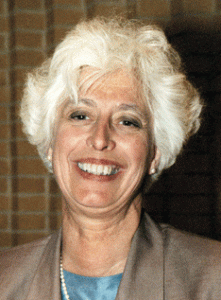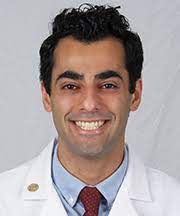2021 M to Z
Patrick Maisonneuve, Albert B Lowenfels. Cancer in Cystic Fibrosis: A Narrative Review of Prevalence, Risk Factors, Screening and Treatment Challenges. Chest 2021 Sep 15;S0012-3692(21)03858-7.doi: 10.1016/j.chest.2021.09.003.Online ahead of print. [Pubmed]

Fig. 1 Patrick Maisonneuve ResearchGate
Cystic fibrosis is a progressive monogenetic disorder that causes persistent pulmonary disease, but also affects other organ systems including the digestive tract. Recent advances in treatment and care of CF patients including the use of new and highly effective CFTR modulators, have led to a dramatic increase in survival; young patients with CF can now expect to live to or beyond middle age, where cancer is more frequent. CF patients are now known to face an increased risk of digestive tract cancer-particularly cancer of the colon. The risk, which could be triggered by associated CF-related conditions or other genetic mechanisms, is even greater in patients who received a transplant. There is also some evidence that CF patients develop adenomatous polyps more frequently and at an earlier age than non-CF subjects. To reduce the excess risk of intestinal cancer in CF patients, the Cystic Fibrosis Foundation has developed colonoscopy-based guidelines. For non-transplanted patients, colonoscopy should commence at age 40, with rescreening at five-year intervals; the screening interval should be shortened to three years if adenomatous polyps are discovered. For transplanted patients, screening should start at age 30, or within two years of the transplant operation. Prior to colonoscopy, it is essential for CF patients to undergo a special, more intensive bowel preparation than normally used for non-CF persons. Whether the new drugs that have dramatically improved morbidity and mortality for CF patients will alter the risk of cancer is unknown and needs to be assessed in future studies.
Dr Patrick Maisonneuve (fig.1) is in the Division of Epidemiology and Biostatistics, IEO European Institute of Oncology IRCCS, Milan Italy.
N Malagutti, V Fancello A Cariani, F Battistini, C Fabbri, A Di Laora, G Valpiani, C Morotti, V Iannini, M Borin, A Ravani, C Bianchini, A Ciorba, F Stomeo, S Pelucchi. Ion concentrations in nasal airway surface liquid: a prediction model for the identification of cystic fibrosis carriers. Rhinology. 2021 Aug 16.doi: 10.4193/Rhin21.064. Online ahead of print [Pubmed]
Background: Cystic fibrosis (CF) carriers seem to have a higher risk to develop chronic rhino-sinusitis (CRS), although the full underlying mechanisms are unknown. Ion concentrations in nasal airway surface liquid (ASL) may be influenced by the heterozygosity for CF gene mutation, with possible impacts on the development of CRS.
Methods: A cheap and feasible standardised technique was designed to measure the ion levels in nasal ASL. With this purpose we collected, under basal conditions, samples from the nasal cavity of 165 adults: 14 homozygo us for CF, 83 carriers and 68 healthy controls. Sodium (Na) and Chlorine (Cl) concentrations were then evaluated among different groups.
Results: Statistical analysis revealed a significant difference of Na and Cl values between controls and carriers and between controls and homozygotes. Receiver operating characteristic (ROC) curves and derived indicators (Youden’s index and Area Under the Curve, AUC) were used to further evaluate the diagnostic capability of Na and Cl concentrations to differentiate heterozygotes from controls. ROC curves demonstrated that the optimal diagnostic cut-off value of Na is at 124, and the optimal cut-off value of Cl is at 103,2.
Conclusion: ASL sampling can be considered a new diagnostic tool for providing quantitative information on nasal ion composition. According to our findings, Na and Cl concentrations of nasal ASL could represent a useful tool to assess heterozygotes and healthy controls.
Dr L Malgutti is at the ENT and Audiology Unit, Department of Neuroscience and Rehabilitation, University Hospital of Ferrara, Ferrara, Italy
Carmen Mangas-Sánchez, María Garriga-García, María Juliana Serrano-Nieto, Ruth García-Romero, Marina Álvarez-Beltrán, Elena Crehuá-Gaudiza, Rosana Muñoz-Codoceo, Lucrecia Suárez-Cortina, Saioa Vicente-Santamaría, Cecilia Martínez-Costa, Juan José Díaz-Martin, Carlos Bousoño-García, David González-Jiménez Vitamin D Status in Pediatric and Young Adult Cystic Fibrosis Patients. Are the New Recommendations Effective? Nutrients 2021 Dec 9;13(12):4413.doi: 10.3390/nu13124413. Free PMC article [Pubmed]

Fig. 2 Carmen Mangas-Sanchez
Introduction: In recent years, guidelines for vitamin D supplementation have been updated and prophylactic recommended doses have been increased in patients with cystic fibrosis (CF).
Objective: To evaluate safety and efficacy of these new recommendations.
Results: Two cohorts of pancreatic insufficient CF patients were compared before (cohort 1: 179 patients) and after (cohort 2: 71 patients) American CF Foundation and European CF Society recommendations were published. Cohort 2 patients received higher Vitamin D doses: 1509 (1306-1711 95% CI) vs 1084 (983-1184 95% CI) IU/Day (p < 0.001), had higher 25 OH vitamin D levels: 30.6 (27.9-33.26 95% CI) vs. 27.4 (25.9-28.8 95% CI) ng/mL (p = 0.028), and had a lower prevalence of insufficient vitamin D levels (<30 ng/mL): 48% vs 65% (p = 0.011). Adjusted by confounding factors, patients in cohort 1 had a higher risk of vitamin D insufficiency: OR 2.23 (1.09-4.57 95% CI) (p = 0.028).
Conclusion: After the implementation of new guidelines, CF patients received higher doses of vitamin D and a risk of vitamin D insufficiency decreased. Despite this, almost a third of CF patients still do not reach sufficient serum calcidiol levels.
Carmen Mangas-Sánchez (Fig 2) is in the department of Pediatric Gastroenterology and Nutrition Section, Hospital Central de Asturias, 33011 Oviedo, Spain.
Christophe Marguet, Véronique Houdouin, Isabelle Pin, Philippe ReixFrédéric Huet, Marie Mittaine, Sophie Ramel, et al. Chest physiotherapy enhances detection of Pseudomonas aeruginosa in nonexpectorating children with cystic fibrosis.ERJ Open Res. 2021 Mar 8;7(1):00513-2020.doi: 10.1183/23120541.00513-2020.eCollection 2021 Jan. Free PMC article [Pubmed]

Fig. 3 Christopher Marguet Loop (Frontiers)
This prospective multicentre study compared three successive methods for sampling airway secretions applied through the same session: 1) an oropharyngeal swab (OP), 2) a chest physiotherapy session followed by a provoked cough to obtain sputum (CP-SP) and 3) a second oropharyngeal swab collected after chest physiotherapy (CP-OP). Haemophilus influenzae, Staphylococcus aureus and P. aeruginosagrowth cultures were assessed. Accuracy tests and an equivalence test were performed to compare the three successive methods of collection.
300 non-expectorating children with CF were included. P. aeruginosa was detected cumulatively in 56 (18.9%) children, and according to the different collection methods in 28 (9.8%), 37 (12.4%) and 44 (14.7%) children by using OP, CP-OP and CP-SP, respectively. Compared with OP, the increased detection rate was +22% for CP-OP (p=0.029) and +57% for CP-SP (p=0.003). CP-SP had the best positive predictive value (86.3%) and negative predictive value (96.0%) for P. aeruginosa compared with the overall detection.
The results of this adequately powered study show differences in the rates of pathogens detected according to the sampling method used. Chest physiotherapy enhanced detection of P. aeruginosa in non-expectorating children with CF.
Professor Christophe Marguet (fig.3) is at the CF Centre, Dept of Paediatrics and Adolescent Medicine, University Hospital Charles Nicolle, CIC INSERM 1404, EA 2656, Rouen University, Rouen, France.
Alessandra Mariani, Simone Gambazza, Federica Carta, Federico Ambrogi, Anna Brivio, Anna Marta Bulfamante, Valeria Daccò, Giacomo Bassotti, Carla Colombo.Prevalence and factors associated with urinary incontinence in females with cystic fibrosis: an Italian single-centre cross-sectional analysis. Pediatr Pulmonol. 2021 Oct 12.doi: 10.1002/ppul.25723. Online ahead of print.[Pubmed]
Background:Individuals with cystic fibrosis (CF) are deemed to have a higher risk of developing urinary incontinence (UI), likely due to repeated increasing pressure on the pelvic floor. We aimed to determine the prevalence of female UI in a large CF referral centre, and to assess the association between UI and severity of CF disease.
Methods:We consecutively recruited female patients regularly attending our CF centre, aged ≥ 6 years and with a confirmed diagnosis of CF. Prevalence, severity and impact of urinary incontinence were assessed by administering two validated questionnaires. Relationship between variables was evaluated by means of multiple correspondence analysis, whereas a logistic model was fitted to capture the statistical association between urinary incontinence and independent variables.
Results:Urinary incontinence was present in 51/153 (33%, 95% CI 26% to 41%) females. Among children and adolescents, the prevalence was 12/82 (15%, 95% CI 8% to 25%) whereas among adults was 39/71 (55%, 95% CI 43% to 67%). The only explanatory variable associated with urinary incontinence was age, with children presenting the lowest risk (OR 0.32, 95%CI 0.05- 0.93). Females presenting low or high nutritional status show higher profile risk of having UI.
Conclusions:Stress urinary incontinence is a common complication in females with CF since childhood. Although it frequently occurs in older patients with a more severe phenotype, much attention should be paid to adults and to their nutritional status. This article is protected by copyright.
Dr Alessandra Mariani is at the Cystic Fibrosis Centre, Fondazione IRCCS Ca’ Granda Ospedale Maggiore Policlinico Milano, Milano, Italy.and the Direzione delle Professioni Sanitarie, Fondazione IRCCS Ca’ Granda Ospedale Maggiore Policlinico Milano, Milano, Italy.
Margaret P Marks , Sonya L Heltshe, Arthur Baines, Bonnie W Ramsey, Lucas R Hoffman, Michael S Stalvey. Most Short Children with Cystic Fibrosis Do Not Catch Up by Adulthood. Nutrients 2021 Dec 10;13(12):4414.doi: 10.3390/nu13124414. Free PMC article [Pubmed]

Fig. 4 Margaret Marks
UAB
Poor linear growth is common in children with cystic fibrosis (CF) and predicts pulmonary status and mortality. Growth impairment develops in infancy, prior to pulmonary decline and despite aggressive nutritional measures. We hypothesized that growth restriction during early childhood in CF is associated with reduced adult height. We used the Cystic Fibrosis Foundation (CFF) patient registry to identify CF adults between 2011 and 2015 (ages 18-19 y, n = 3655) and had height for age (HFA) records between ages 2 and 4 y. We found that only 26% CF adults were ≥median HFA and 25% were <10th percentile. Between 2 and 4 years, those with height < 10th percentile had increased odds of being <10th percentile in adulthood compared to children ≥ 10th percentile (OR = 7.7). Of HFA measured between the 10th and 25th percentiles at ages 2-4, 58% were <25th percentile as adults. Only 13% between the 10th and 25th percentile HFA at age 2-4 years were >50th percentile as adults. Maximum height between ages 2 and 4 highly correlated with adult height. These results demonstrate that low early childhood CF height correlates with height in adulthood. Since linear growth correlates with lung growth, identifying both risk factors and interventions for growth failure (nutritional support, confounders of clinical care, and potential endocrine involvement) could lead to improved overall health.
Dr Margaret P Marks (fig.4) is a paediatrician in the Department of Pediatrics, University of Alabama, and the Cystic Fibrosis Research Center, University of Alabama, Birmingham, AL 35233, USA.
C Martin, E Burnet, A Ronayette-Preira, P de Carli, J Martin, L Delmas, B Prieur, P-R Burgel. Patient perspectives following initiation of elexacaftor-tezacaftor-ivacaftor in people with cystic fibrosis and advanced lung disease. Respir Med Res. 2021 May 17;80:100829.doi: 10.1016/j.resmer.2021.100829.Online ahead of print. [Pubmed]
Backgound:Elexacaftor-tezacaftor-ivacaftor partially restores cystic fibrosis transmembrane conductance regulator function, and has been shown to induce significant clinical improvement in patients with at least one Phe508del allele. Yet little data exist on patient perspectives following elexacaftor-tezacaftor-ivacaftor initiation.
Methods:A mixed methods study was conducted using an online 13-item questionnaire (including 9 closed questions and 4 open questions), submitted from July 10th to August 21th2020 to French patients aged 12 years and older with advanced CF who were treated with elexacaftor-tezacaftor-ivacaftor. Their responses were summarized as numbers (%), and free-text items were analysed using a grounded theory approach.
Results:Of 245 patients who started elexacaftor-tezacaftor-ivacaftor in France, 101 (41%) participated. Median [IQR] age was 35 [28-41] years and duration of elexacaftor-tezacaftor-ivacaftor treatment was 4.3 [3.0-5.6] months. Patients generally reported a rapid impact on respiratory symptoms, sleep quality, general well-being and physical self-esteem, and a reduction in overall treatment burden. The majority of patients contrasted treatment burden, symptom severity, depression and a closed future marked by death or transplantation before elexacaftor-tezacaftor-ivacaftor, to renewed and unexpected physical strength, leading to greater self-confidence, autonomy and long-term planning, after treatment initiation. A small number of patients expressed concerns, mainly regarding changes in body representation and/or the fear of becoming dependent on the treatment.
Conclusion:After initiation of elexacaftor-tezacaftor-ivacaftor, CF patients with advanced disease reported rapid and positive physical, psychological and social effects, which translated into improved quality of life and the formulation of new life goals.
Dr C Martin is at the Université de Paris, Institut Cochin, Inserm U1016, Paris, France; Respiratory Medicine and National Reference Cystic Fibrosis Reference Center, Cochin Hospital, Assistance Publique Hôpitaux de Paris (AP-HP), Paris, France; ERN-Lung CF network.
Laura I Marquez Loza, Ashley L Cooney, Qian Dong, Christoph O Randak, Stefano Rivella, Patrick L Sinn, Paul B McCray Jr. Increased CFTR expression and function from an optimized lentiviral vector for cystic fibrosis gene therapy. Mol Ther Methods Clin Dev 2021 Feb 27;21:94-106.doi: 10.1016/j.omtm.2021.02.020.eCollection 2021 Jun 11. Free PMC article [Pubmed]

Fig. 5 Laura-Marquez Lozajpg Carver College of Medicine
Despite significant advances in cystic fibrosis (CF) treatments, a one-time treatment for this life-shortening disease remains elusive. Stable complementation of the disease-causing mutation with a normal copy of the CF transmembrane conductance regulator (CFTR) gene fulfills that goal. Integrating lentiviral vectors are well suited for this purpose, but widespread airway transduction in humans is limited by achievable titers and delivery barriers. Since airway epithelial cells are interconnected through gap junctions, small numbers of cells expressing supraphysiologic levels of CFTR could support sufficient channel function to rescue CF phenotypes.
Here, we investigated promoter choice and CFTR codon optimization (coCFTR) as strategies to regulate CFTRexpression. We evaluated two promoters-phosphoglycerate kinase (PGK) and elongation factor 1-α (EF1α)-that have been safely used in clinical trials. We also compared the wild-type human CFTRsequence to three alternative coCFTR sequences generated by different algorithms. With the use of the CFTR-mediated anion current in primary human CF airway epithelia to quantify channel expression and function, we determined that EF1α produced greater currents than PGK and identified a coCFTR sequence that conferred significantly increased functional CFTR expression. Optimized promoter and CFTR sequences advance lentiviral vectors toward CF gene therapy clinical trials.
Dr Laura I Marquez Loza (fig.5) is at the Stead Family Department of Pediatrics, The University of Iowa, Iowa City, IA 52242, USA and the Pappajohn Biomedical Institute and the Center for Gene Therapy, The University of Iowa, Iowa City, IA 52242, USA
Martin Y Ng, Hong Li, Mikel D Ghelfi, Yale E Goldman, Barry S Cooperman. Ataluren and aminoglycosides stimulate read-through of nonsense codons by orthogonal mechanisms. Proc Natl Acad Sci U S A 2021 Jan 12;118(2):e2020599118.doi: 10.1073/pnas.2020599118.Free article [Pubmed]
During protein synthesis, nonsense mutations, resulting in premature stop codons (PSCs), produce truncated, inactive protein products. Such defective gene products give rise to many diseases, including cystic fibrosis, Duchenne muscular dystrophy (DMD), and some cancers.
Small molecule nonsense suppressors, known as TRIDs (translational read-through-inducing drugs), stimulate stop codon read-through. The best characterized TRIDs are ataluren, which has been approved by the European Medicines Agency for the treatment of DMD, and G418, a structurally dissimilar aminoglycoside. Previously, we applied a highly purified in vitro eukaryotic translation system to demonstrate that both aminoglycosides like G418 and more hydrophobic molecules like ataluren stimulate read-through by direct interaction with the cell’s protein synthesis machinery.
Our results suggested that they might do so by different mechanisms. Here, we pursue this suggestion through a more-detailed investigation of ataluren and G418 effects on read-through. We find that ataluren stimulation of read-through derives exclusively from its ability to inhibit release factor activity. In contrast, G418 increases functional near-cognate tRNA mispairing with a PSC, resulting from binding to its tight site on the ribosome, with little if any effect on release factor activity. The low toxicity of ataluren suggests that development of new TRIDs exclusively directed toward inhibiting termination should be a priority in combatting PSC diseases. Our results also provide rate measurements of some of the elementary steps during the eukaryotic translation elongation cycle, allowing us to determine how these rates are modified when cognate tRNA is replaced by near cognate tRNA ± TRIDs.
Martin Y Ng is at the Department of Chemistry, University of Pennsylvania, Philadelphia, PA 19104.
Stacey L Martiniano, Alexander Elbert, Phillip M Farrell, Clement L Ren, Marci K Sontag, Runyu Wu, Susanna A McColley.Outcomes of infants born during the first 9 years of CF newborn screening in the United States: a retrospective Cystic Fibrosis Foundation Patient Registry cohort study. Pediatr Pulmonol 2021 Sep 1. doi:10.1002/ppul.25658. Online ahead of print.[Pubmed]

Fig. 6 Stacey L Martiniano Children’s Hotspital Colorado
Introduction:Newborn screening (NBS) for cystic fibrosis (CF) was implemented in all US states and DC by 2010. This hypothesis generating study was designed to form the basis of additional analyses and to plan quality improvement initiatives. The aims were to describe the outcomes of infants with CF born during the first 9 years of universal NBS.
Methods:We included participants in the CF Foundation Patient Registry born 2010-2018 with age of recorded CF diagnosis 0-365 days old. We compared age of center-reported diagnosis, age at first CF event (defined as earliest sweat test, clinic visit or hospitalization), demographics, and outcomes between 3 cohorts born between 2010-2012, 2013-2015, and 2016-2018.
Results:In 6354 infants, the median age at first CF event decreased from the 1st to the 3rd cohort. Weight-for-age (WFA) was < 10th percentile in about 40% of infants at the first CF Center visit. Median WFA z-score at 1-2 years was > 0 but height-for-age (HFA) z-score was < 0 through age 5-6 years. The second cohort had a higher HFA z-score than the first cohort at age 5-6 years. Pseudomonas aeruginosa infection was less common in later cohorts. About 1/3 of infants were hospitalized in the first year of life with no changes over time.
Conclusion: Over 9 years of CF NBS, median age at first CF event decreased. CF NBS had positive health impacts, but early life nutritional deficits and a high rate of infant hospitalizations persist.
Dr Stacey L Martiniano (fig.6) is pediatric pulmonologist at the University of Colorado Anschutz Medical Center, United States and the Children’s Hospital Colorado, United States
Hannah R Mathew, May Y ChoiMichael D Parkins, Marvin J Fritzler. Systematic review: cystic fibrosis in the SARS-CoV-2/COVID-19 pandemic BMC Pulm Med 2021 May 20;21(1):173. doi: 10.1186/s12890-021-01528-0 Free PMC article [Pubmed] Background:Severe acute respiratory syndrome coronavirus 2 (SARS-CoV-2) infection and the development of life-threatening COVID-19 are believed to disproportionately affect certain at-risk populations. However, it is not clear whether individuals with cystic fibrosis (CF) are at a higher risk of COVID-19 or its adverse consequences. Recurrent respiratory viral infections are often associated with perturbation and pulmonary exacerbations of CF as evidenced by the significant morbidity observed in CF individuals during the 2009 H1N1 pandemic. The primary goal of this review was to systematically survey published accounts of COVID-19 in CF and determine if individuals with CF are disproportionally affected by SARS-CoV-2 and development of COVID-19.
Methods:We conducted a systematic literature search using EMBASE and Medline between April 28 and December 10, 2020. Six evaluable studies reporting on a total of 339 individuals with CF who developed COVID-19 were included in this study.
Results:We found that although individuals with CF generally experience acute exacerbations of lung disease from infectious agents, COVID-19 incidence estimates in CF appear to be lower than in the general population. However, there are reports of subsets of CF, such as those who had organ transplants, that may experience a more severe COVID-19 course. Potential protective mechanisms in the CF population include pre-pandemic social isolation practices, infection prevention and control knowledge, altered expression of angiotensin-converting enzyme, and the use of certain medications.
Conclusions:Although individuals with CF are at risk of acute exacerbations often precipitated by respiratory tract viral infections, published evidence to date indicated that individuals with CF do not experience higher risks of contracting SARS-CoV-2 infection. However, there is evidence that some subsets within the CF population, including those post-transplantation, may experience a more severe clinical course. As SARS-CoV-2 variants are identified and the pandemic goes through additional waves of disease outbreaks, ongoing monitoring of the risk of COVID-19 in individuals with CF is required.
Hannah R Mathew BSc is a medical student in the Department of Biological Sciences, University of Calgary, Calgary, AB, Canada
Kimberly A McBennett, Pamela B Davis, Michael W Konstan. Increasing life expectancy in cystic fibrosis: Advances and challenges. Pediatr Pulmonol 2021 Oct 21.doi: 10.1002/ppul.25733. Online ahead of print. [Pubmed]

Fig. 7 Kimberly A McBennett
Since the first description of cystic fibrosis in 1938, there have been significant advances in both quality of life and longevity for people living with this disease. In this article we describe the milestones of the last 80 years and what we perceive to be the remaining barriers to normalcy for this population.
Dr Kimberly A McBennett (fig.7) is at Case Western Reserve University School of Medicine, Cleveland, Ohio, USA.Rainbow Babies and Children’s Hospital, Cleveland, Ohio, USA.
J Abram McBride, Taylor P Kohn, Daniel J Mazur, Larry I Lipshultz,R Matthew Coward .Sperm retrieval and intracytoplasmic sperm injection outcomes in men with cystic fibrosis disease versus congenital bilateral absence of the vas deferens. Asian J Androl Mar-Apr 2021;23(2):140-145.doi: 10.4103/aja.aja_48_20. Free article [Pubmed]

Fig. 8 J Abram McBride LinkedIn.com
Recent data suggest that cystic fibrosis transmembrane conductance regulator (CFTR) gene alterations negatively impact male fertility beyond obstruction appear to significantly impair spermatogenesis and sperm function. (More details in Pubmed abstract and in Free article)
Dr J Abram McBride is at the Scott Department of Urology, Baylor College of Medicine, Houston, TX 77030, USA
Meghan E McGarry, Susanna A McColley. Cystic fibrosis patients of minority race and ethnicity less likely eligible for CFTR modulators based on CFTR genotype. Pediatr Pulmonol 2021 Jun;56(6):1496-1503.doi: 10.1002/ppul.25285. Epub 2021 Feb 1. [Pubmed]

Fig. 9 Megan McGarry. US New Health
Background: Cystic fibrosis transmembrane conductance regulator (CFTR) modulators are disease-modifying medications for cystic fibrosis (CF) and are shown to be efficacious for only specific CFTR mutations. CFTR mutation frequency varies by ancestry, which is different from but related to demographic racial and ethnic group. Eligibility for CFTR modulator therapy has not been previously reported by race and ethnicity.
Methods: We conducted a cross-sectional study of patients in the 2018 CF Foundation Patient Registry. We analyzed the percentage of patients in each US Census defined racial and ethnic group eligible for CFTR modulators based on CFTR mutations approved by the US FDA and then based on both mutations and FDA approval by age. We compared lung function based on CFTR modulator eligibility and prescription.
Findings: Based on CFTR mutations alone, 92.4% of non-Hispanic White patients, 69.7% of Black/African American patients, 75.6% of Hispanic patients, and 80.5% of other race patients eligible for CFTR modulators. For each CFTR modulator, Black/African American patients were least likely to have eligible mutations, and non-Hispanic White patients were most likely. There was no difference in the disparity between racial and/or ethnic groups with the addition of current FDA approval by age. The lowest pulmonary function in the cohort was seen in non-Hispanic White, Black/African American, and Hispanic patients not eligible for CFTR modulators.
Interpretation: Patients with CF from minority groups are less likely to be eligible for CFTR modulators. Because people with CF who are racial and ethnic minorities have increased disease severity and earlier mortality, this will further contribute to health disparities.
Meghan McGarry (fig.9) is a Pediatric Pulmonologist and Assistant Professor in the Department of Pediatrics, University of California, San Francisco, California, USA.
Paul McNally,Daryl Butler, Yuliya V Karpievitch, Barry Linnane, Sarath Ranganathan, Stephen M Stick, Graham L Hall, Andre Schultz, SHIELD CF and ARESTCF. Ivacaftor and Airway Inflammation in Preschool Children with Cystic Fibrosis. Am J Respir Crit Care Med 2021 Jun 2.doi: 10.1164/rccm.202012-4332LE.Online ahead of print. [Pubmed]

Fig. 10 Paul McNally
rcsi.com
The authors comment – Notwithstanding certain limitations to our study, our data suggest that in stable preschool children with CF, ivacaftor does not have a significant beneficial effect on airway infection and inflammation. Therefore caution should be applied in this group of children before discontinuing, avoiding or delaying the use of the use of traditional treatments that we might typically prescribe such as airway clearance, mucoactive agents and antibiotics.
Paul McNally (fig.10) is Associate Professor of Paediatrics at the at the RCSI, 8863, Paediatrics, Dublin, Ireland and Children’s Health Ireland, 575376, Respiratory Medicine, Dublin, Ireland; paulmcnally@rcsi.ie
Chadia Mekki, Abdel Aissat, Véronique Mirlesse, Sophie Mayer Lacrosniere, Elsa Eche, Annick Le Floch, Sandra Whalen, Cecile Prud’Homme, Christelle Remus, Benoit Funalot, Vanina Castaigne, Pascale Fanen, Alix de Becdelièvre. Prenatal Ultrasound Suspicion of Cystic Fibrosis in a Multiethnic Population: Is Extensive CFTRGenotyping Needed? Genes (Basel) 2021 Apr 29;12(5):670.doi: 10.3390/genes12050670. Free PMC article. [Pubmed]

Fig. 11 Chadia Mekki ResearchGate
In families without a Cystic Fibrosis (CF) history, fetal ultrasound bowel abnormalities can unexpectedly reveal the disease. Isolated or in association, the signs can be fetal bowel hyperechogenicity, intestinal loop dilatation and non-visualization of fetal gallbladder. In these cases, search for CF transmembrane conductance regulator (CFTR) gene mutations is part of the recommended diagnostic practices, with a search for frequent mutations according to ethnicity, and, in case of the triad of signs, with an exhaustive study of the gene. However, the molecular diagnosis remains a challenge in populations without well-known frequent pathogenic variants. We present a multiethnic cohort of 108 pregnancies with fetal bowel abnormalities in which the parents benefited from an exhaustive study of the CFTR gene. We describe the new homozygous p.Cys1410* mutation in a fetus of African origin. We did not observe the most frequent p.Phe508del mutation in our cohort but evidenced variants undetected by our frequent mutations kit. Thanks to the progress of sequencing techniques and despite the difficulties of interpretation occasionally encountered, we discuss the need to carry out a comprehensive CFTR study in all patients in case of fetal bowel abnormalities.
Dr Chadia Mekki (fig.11) is in the Departement de Genetique, DMU Biologie-Pathologie, GH Mondor-Chenevier, AP-HP, F-94010 Creteil, France.
Lina Merjaneh, Sana Hasan, Nader Kasim, Katie Larson Ode. The role of modulators in cystic fibrosis related diabetes. J Clin Transl Endocrinol 2021 Dec 7;27:100286. doi: 10.1016/j.jcte.2021.100286.eCollection 2022 Mar. Free PMC article [Pubmed]

Fig 12 Lina Merjaneh peds.uw.edu
The development and introduction of modulator therapies have completely shifted the paradigm for the treatment of cystic fibrosis (CF). Highly effective modulator therapies have driven marked improvements in lung function, exacerbation rate, weight and quality of life in CF patients. However, their effect on CF related diabetes (CFRD) is not well delineated. The role of CF transmembrane conductance regulator (CFTR) in CFRD pathogenesis is inadequately understood and research aimed at deciphering the underlying mechanisms of CFRD continues to evolve.
In this review, we summarize what is known regarding the effect of CFTR modulators on CFRD. Small studies using ivacaftor monotherapy in gating mutations have revealed improvement in insulin secretion, glucose tolerance and/or decrease in insulin requirement. However, lumacaftor/ivacaftor studies (primarily in delta F 508 homozygous) have not revealed significant improvement in CFRD or glucose tolerance. No studies are yet available regarding the effect of the highly effective triple therapy (elexacaftor/tezacaftor/ivacaftor) on CFRD or insulin secretion. CFTR modulators might affect development or progression of CFRD through many mechanisms including improving insulin secretion by correcting the CFTR defect directly, improving ductal function, reducing islet inflammation, and improving incretin secretion or by enhancing insulin sensitivity via reduced systemic inflammation and increased physical activity driven by improved lung function and quality of life. On the other hand, they can stimulate appetite and improve gastrointestinal function resulting in increased caloric intake and absorption, driving excessive weight gain and potentially increased insulin resistance. If the defect in insulin secretion is reversible then it is possible that initiation of CFTR modulators at a younger age might help prevent CFRD. Despite the advances in CF management, CFRD remains a challenge and knowledge continues to evolve. Future studies will drive better understanding of the role of highly effective CFTR modulators in CFRD.
Dr Lina Merjaneh (fig 12) is a pediatric endocrinologist and Assistant Professor at Seattle Children’s Hospital.
Sylwia Michorowska. Ataluren-Promising Therapeutic Premature Termination Codon Readthrough Frontrunner. Pharmaceuticals (Basel). 2021 Aug 9;14(8):785.doi: 10.3390/ph14080785. [Pubmed]Free PMC article

Fig. 13 Sylwia Michorowska Off Course
Around 12% of hereditary disease-causing mutations are in-frame nonsense mutations. The expression of genes containing nonsense mutations potentially leads to the production of truncated proteins with residual or virtually no function. However, the translation of transcripts containing premature stop codons resulting in full-length protein expression can be achieved using readthrough agents. Among them, only ataluren was approved in several countries to treat nonsense mutation Duchenne muscular dystrophy (DMD) patients.
This review summarizes ataluren’s journey from its identification, via first in vitro activity experiments, to clinical trials in DMD, cystic fibrosis, and aniridia. Additionally, data on its pharmacokinetics and mechanism of action are presented. The range of diseases with underlying nonsense mutations is described for which ataluren therapy seems to be promising. What is more, experiments in which ataluren did not show its readthrough activity are also included, and reasons for their failures are discussed.
Dr Sylwia Michorowska (fig.13) is in the Department of Bioanalysis and Drug Analysis, Faculty of Pharmacy, Medical University of Warsaw, 02-097 Warsaw, Poland.
— The full article is an interesting very detailed review of the development and clinical trials of ataluren, initially known as PTC124, in muscular dystrophy, cystic fibrosis and various metabolic disorders.
Christina M Mingora, Patrick A Flume.Pulmonary Complications in Cystic Fibrosis: past, present and future. Chest 2021 Jun 17;S0012-3692(21)01127-2.doi:0.1016/j.chest.2021.06.017.Online ahead of print. [Pubmed]

Fig. 14 Christina Mingora
LinkedIn
Cystic Fibrosis (CF) is an autosomal recessive genetic condition with multi-systemic disease manifestations, the most prominent of which occur in the respiratory system. Despite significant developments in disease understanding and therapeutics, each contributing to improved lung function and survival in persons with CF, several pulmonary complications including pneumothorax, massive hemoptysis, and respiratory failure continue to occur. In this review, we briefly describe each of these complications and their management, as well as discuss how they impact the care and disease trajectory of individuals in whom they occur. Finally, we discuss the evolving role that palliative care and cystic fibrosis transmembrane conductance regular modulator therapies play in the natural disease course and care of persons with CF.
Dr Christina M Mingora(fig 14) is a pulmonologist at the Medical University of South Carolina, Charleston, SC.
–- This is a clear account of the chest problems which remain a major factor affecting the lives of the majority of people with CF
Pedro Mondéjar-López, Alexander Horsley, Felix Ratjen, Silvia Bertolo,Helene de Vicente, Òscar Asensio de la Cruz. A multimodal approach to detect and monitor early lung disease in cystic fibrosis. Expert Rev Respir Med.2021 Apr 12;1-12.doi: 10.1080/17476348.2021.1908131.Online ahead of print.[Pubmed]

Fig. 15 Pedro Mondejar-López
ResearchGate
Introduction: In the early stages, lung involvement in cystic fibrosis (CF) can be silent, with disease progression occurring in the absence of clinical symptoms. Irreversible airway damage is present in the early stages of disease; however, reliable biomarkers of early damage due to inflammation and infection that are universally applicable in day-to-day patient management have yet to be identified.
Areas covered: At present, the main methods of detecting and monitoring early lung disease in CF are the lung clearance index (LCI), computed tomography (CT), and magnetic resonance imaging (MRI). LCI can be used to detect patients who may require more intense monitoring, identify exacerbations, and monitor responses to new interventions. High-resolution CT detects structural alterations in the lungs of CF patients with the best resolution of current imaging techniques. MRI is a radiation-free imaging alternative that provides both morphological and functional information. The role of MRI for short-term follow-up and pulmonary exacerbations is currently being investigated.
Expert opinion: The roles of LCI and MRI are expected to expand considerably over the next few years. Meanwhile, closer collaboration between pulmonology and radiology specialties is an important goal toward improving care and optimizing outcomes in young patients with CF.
Dr Pedro Mondéjar-López (fig. 15) is Pediatric Pulmonologist at the Pediatric Pulmonology and Cystic Fibrosis Unit, University Hospital Virgen de la Arrixaca, Murcia, Spain.
Renee N Ng, Anna S Tai, Barbara J Chang, Stephen M Stick, Anthony Kicic Overcoming Challenges to Make Bacteriophage Therapy Standard Clinical Treatment Practice for Cystic Fibrosis. Front Microbiol 2021 Jan 11;11:593988.doi: 10.3389/fmicb.2020.593988.eCollection 2020. Free PMC article [Pubmed]

Fig. 16 Renee NG
ResearchGate
Individuals with cystic fibrosis (CF) are given antimicrobials as prophylaxis against bacterial lung infection, which contributes to the growing emergence of multidrug resistant (MDR) pathogens isolated. Pathogens such as Pseudomonas aeruginosa that are commonly isolated from individuals with CF are armed with an arsenal of protective and virulence mechanisms, complicating eradication and treatment strategies. While translation of phage therapy into standard care for CF has been explored, challenges such as the lack of an appropriate animal model demonstrating safety in vivo exist. In this review, we have discussed and provided some insights in the use of primary airway epithelial cells to represent the mucoenvironment of the CF lungs to demonstrate safety and efficacy of phage therapy. The combination of phage therapy and antimicrobials is gaining attention and has the potential to delay the onset of MDR infections. It is evident that efforts to translate phage therapy into standard clinical practice have gained traction in the past 5 years. Ultimately, collaboration, transparency in data publications and standardized policies are needed for clinical translation.
Renee N Ng (fig.16) is a PhD Candidate at the School of Biomedical Sciences, The University of Western Australia, Perth, WA, Australia
Anne H Neerincx, Katrine Whiteson, Joann L Phan, Paul Brinkman, Mahmoud I Abdel-Aziz, Els J M Weersink, Josje Altenburg, Christof J Majoor, Anke H Maitland-van der Zee, Lieuwe D J Bos. Lumacaftor/ivacaftor changes the lung microbiome and metabolome in cystic fibrosis patients. ERJ Open Res 2021 Apr 19;7(2):00731-2020.doi: 10.1183/23120541.00731-2020.eCollection 2021 Apr. Free PMC article [Pubmed](please see PubMed abstract for more detail)

Fig 17 Anne Neerincx Researchgate
Targeted cystic fibrosis (CF) therapy with lumacaftor/ivacaftor partly restores chloride channel function and improves epithelial fluid transport in the airways. Consequently, changes may occur in the microbiome, which is adapted to CF lungs
A study to investigate the effects of lumacaftor/ivacaftor on respiratory microbial composition and microbial metabolic activity by repeatedly sampling the lower respiratory tract.
Findings – After starting CF transmembrane conductance regulator (CFTR) modulating treatment in CF patients with a homozygous Phe508del mutation, a temporary and moderate change in the lung microbiome is observed, which is mainly characterised by a reduction in the relative abundance of Pseudomonas aeruginosa.
Dr Anne H Neerincx (fig 17) is a Postdoctoral Researcher in the Dept of Respiratory Medicine, Amsterdam UMC – Location AMC, University of Amsterdam, Amsterdam, the Netherlands
Simon J Newsome, Rhian M Daniel, Siobhán B Carr , Diana Bilton, Ruth H Keogh. Using negative control outcomes and difference-in-differences to estimate treatment effects in an entirely treated cohort: the effect of ivacaftor in cystic fibrosis. Am J Epidemiol. 2021 Nov 9;kwab263.doi: 10.1093/aje/kwab263. Online ahead of print. [Pubmed]

Fig. 18 Simon J Newsome
When an entire cohort of patients receives a treatment it is difficult to estimate the treatment effect in the treated because there are no directly comparable untreated patients. Attempts can be made to find a suitable control group, (e.g. historical controls), but underlying differences between the treated and untreated can result in bias.
We show how negative control outcomes (NCO) combined with difference-in-differences analysis can be used to assess bias in treatment effect estimates and obtain unbiased estimates under certain assumptions. Causal diagrams and potential outcomes are used to explain the methods and assumptions.
We apply the methods to UK Cystic Fibrosis (CF) Registry data to investigate the effect of ivacaftor, introduced in 2012 for a subset of the CF population with a particular genotype, on lung function and days receiving intravenous antibiotics (IV days). We consider two NCOs: outcomes measured in the pre-ivacaftor period and outcomes in individuals ineligible for ivacaftor due to their genotype. Ivacaftor was found to improve lung function in year one (~6.5 increase in FEV1%), was associated with reduced lung function decline (~0.5 decrease in annual FEV1% decline, though confidence intervals include 0), and reduced the rate of IV days (~60% over 3 years).
Simon J Newsome (fig.18) is a PhD student in the Department of Medical Statistics, Faculty of Epidemiology and Population Health, London School of Hygiene & Tropical Medicine, UK and Senior Principal Biostatistician at Novartis, Basel, Switzerland
David P Nichols, Alex C Paynter, Sonya L Heltshe, Scott H Donaldson, Carla A Frederick, Steven D Freedman et al, PROMISE Study Group. Clinical Effectiveness of Elexacaftor/Tezacftor/Ivacaftor in People with Cystic Fibrosis Am J Respir Crit Care Med 2021 Nov 16.doi: 10.1164/rccm.202108-1986OC.Online ahead of print.[Pubmed]

Fig. 19 David Nichols University of Washington
Rationale: The cystic fibrosis (CF) modulator drug elexacaftor/tezacaftor/ivacaftor (ETI) proved highly effective in controlled clinical trials for individuals with ≥1 F508del allele, which occurs in at least 85% of people with CF (PwCF).
Objective: PROMISE is a post-approval study to understand the broad effects of ETI through 30 months clinical use in a more diverse US patient population with planned analyses after 6 months
Methods: Prospective, observational study in 487 PwCF age ≥12 years with ≥1 F508del allele starting ETI for the first time. Assessments occurred before and 1, 3, and 6 months into ETI therapy. Outcomes included change in ppFEV1, sweat chloride concentration, body mass index, and self-reported respiratory symptoms.
Results: average age was 25.1 years. 44.1% entered the study using tezacaftor/ivacaftor or lumacaftor/ivacaftor while 6.7% were using ivacaftor, consistent with F508del homozygosity and G551D allele, respectively. At 6 months into ETI therapy, ppFEV1 improved 9.76 percentage points (95% CI 8.76, 10.76) from baseline, CFQ-R Respiratory Domain score improved 20.4 points (95% CI 18.3, 22.5), and sweat chloride decreased -41.7 mmol/L (95% CI 43.8, 39.6). BMI also significantly increased. Changes were larger in those naïve to modulators but substantial in all groups, including those treated with ivacaftor at baseline.
Conclusions: ETI by clinical prescription provided large improvements in lung function, respiratory symptoms, and BMI in a diverse population naïve to modulator drug therapy, using existing two-drug combinations, or using ivacaftor alone. Each group also experienced significant reductions in sweat chloride concentration, which correlated with improved ppFEV1 in the overall study population.
David P Nichols (fig.19) is a professor of pediatrics in the University of Washington School of Medicine, 12353, Pediatrics, Seattle, Washington, United States.Seattle Children’s Hospital, 7274, Pediatric Pulmonology, Seattle, Washington, United States.
Manuel Manfred Nietert , Liza Vinhoven, Florian Auer, Sylvia Hafkemeyer, Frauke Stanke. Comprehensive Analysis of Chemical Structures That Have Been Tested as CFTR Activating Substances in a Publicly Available Database CandActCFTR. Front Pharmacol 2021 Dec 8;12:689205.doi: 10.3389/fphar.2021.689205. eCollection 2021. Free PMC article [Pubmed]

Fig. 20 Manuel M Nietert bioinformatics.umg.eu
Background: Cystic fibrosis (CF) is a genetic disease caused by mutations in CFTR, which encodes a chloride and bicarbonate transporter expressed in exocrine epithelia throughout the body. Recently, some therapeutics became available that directly target dysfunctional CFTR, yet research for more effective substances is ongoing. The database CandActCFTR aims to provide detailed and comprehensive information on candidate therapeutics for the activation of CFTR-mediated ion conductance aiding systems-biology approaches to identify substances that will synergistically activate CFTR-mediated ion conductance based on published data.
Results: Until 10/2020, we derived data from 108 publications on 3,109 CFTR-relevant substances via the literature database PubMed and further 666 substances via ChEMBL; only 19 substances were shared between these sources. One hundred and forty-five molecules do not have a corresponding entry in PubChem or ChemSpider, which indicates that there currently is no single comprehensive database on chemical substances in the public domain. Apart from basic data on all compounds, we have visualized the chemical space derived from their chemical descriptors via a principal component analysis annotated for CFTR-relevant biological categories. Our online query tools enable the search for most similar compounds and provide the relevant annotations in a structured way. The integration of the KNIME software environment in the back-end facilitates a fast and user-friendly maintenance of the provided data sets and a quick extension with new functionalities, e.g., new analysis routines. CandActBase automatically integrates information from other online sources, such as synonyms from PubChem and provides links to other resources like ChEMBL or the source publications.
Conclusion: CandActCFTR aims to establish a database model of candidate cystic fibrosis therapeutics for the activation of CFTR-mediated ion conductance to merge data from publicly available sources. Using CandActBase, our strategy to represent data from several internet resources in a merged and organized form can also be applied to other use cases. For substances tested as CFTR activating compounds, the search function allows users to check if a specific compound or a closely related substance was already tested in the CF field. The acquired information on tested substances will assist in the identification of the most promising candidates for future therapeutics.
Dr Manuel Manfred Nietert (fig.20) is Group Leader in the Department of Medical Bioinformatics, University Medical Center Göttingen, Göttingen, Germany. CIDAS Campus Institute Data Science, Georg-August-University, Göttingen, Germany.
David P Nichols , Pradeep K Singh, Arthur Baines, Lindsay J Caverly , James F Chmiel , Ronald L GIbson , Jorge Lascano , Sarah J Morgan, George Retsch-Bogart, Lisa Saiman, Hossein Sadeghi, Joanne L Billings, Sonya L Heltshe Shannon Kirby , Ada Kong , Jerry A Nick , Nicole Mayer-Hamblett , TEACH Study Group Collaborators. Risk factors for progression of structural lung disease in school-age children with cystic fibrosis. Thorax 2021 Oct 27;thoraxjnl-2021-217782.doi: 10.1136/thoraxjnl-2021-217782.Online ahead of print. [Pubmed]
Rationale: Inhaled tobramycin and oral azithromycin are common chronic therapies in people with cystic fibrosis and Pseudomonas aeruginosa airway infection. Some studies have shown that azithromycin can reduce the ability of tobramycin to kill P. aeruginosa. This trial was done to test the effects of combining azithromycin with inhaled tobramycin on clinical and microbiological outcomes in people already using inhaled tobramycin. We theorised that those randomised to placebo (no azithromycin) would have greater improvement in forced expiratory volume in one second (FEV1) and greater reduction in P. aeruginosa sputum in response to tobramycin.
Methods: A 6-week prospective, randomised, placebo-controlled, double-blind trial testing oral azithromycin versus placebo combined with clinically prescribed inhaled tobramycin in individuals with cystic fibrosis and P. aeruginosa airway infection.
Results: Over a 6-week period, including 4 weeks of inhaled tobramycin, the relative change in FEV1 did not statistically significantly differ between groups (azithromycin (n=56) minus placebo (n=52) difference: 3.44%; 95% CI: -0.48 to 7.35; p=0.085). Differences in secondary clinical outcomes, including patient-reported symptom scores, weight and need for additional antibiotics, did not significantly differ. Among the 29 azithromycin and 35 placebo participants providing paired sputum samples, the 6-week change in P. aeruginosa density differed in favour of the placebo group (difference: 0.75 log10 CFU/mL; 95% CI: 0.03 to 1.47; p=0.043).
Conclusions: Despite having greater reduction in P. aeruginosa density in participants able to provide sputum samples, participants randomised to placebo with inhaled tobramycin did not experience significantly greater improvements in lung function or other clinical outcomes compared with those randomised to azithromycin with tobramycin.
David P Nichols (fig 19 above) is in the Department of Pediatrics, University of Washington School of Medicine, Seattle, Washington, USA and Cystic Fibrosis Foundation Therapeutics Development Network Coordinating Centre, Seattle Children’s Research Institute, Seattle, Washington, USA.
Yasmeen Obeidat, Davinder Singh, Saba AlTarawneh, Joseph Simmons, Adnan Elghezewi, Eva Patton-Tackett, Wesam Frandah.Ascending Cholangitis Caused by Methicillin-Resistant Staphylococcus aureus Species in a Patient With Cystic Fibrosis. Cureus 2021 Aug 10;13(8):e17045doi: 10.7759/cureus.17045.eCollection 2021 Aug. Free PMC article [Pubmed]

Fig. 21 Yasmeen Obeidat ResearchGate
Ascending cholangitis is a bacterial infection of the extra-hepatic biliary system and presents as a life-threatening systemic condition. Increased bacterial loads and biliary obstruction favor bacterial translocation into the vascular and lymphatic systems. Common organisms isolated are Escherichia Coli, Klebsiella, Enterococcus species, and Enterobacter species. Methicillin-resistant Staphylococcus aureus (MRSA) is a rare isolate in ascending cholangitis. We present a case of a 24-year-old patient with cystic fibrosis who presented with epigastric abdominal pain, low-grade fever, jaundice, dark urine, and nausea for two days. Initial workup revealed elevated liver enzymes, hyperbilirubinemia, leukocytosis, and an ultrasound which showed common bile duct dilation to 14 mm with choledocholithiasis. He underwent endoscopic retrograde cholangiopancreatography (ERCP) with stone extraction and bile fluid culture. Cultures grew out MRSA and the patient was treated with appropriate antibiotic therapy. The mainstay of therapy for ascending cholangitis is adequate hydration, antibiotics, and biliary decompression. Early recognition of the offending organism is critical in guiding therapy. Current guidelines focus on the empiric treatment of Gram-negative and anaerobic bacteria. Clinicians should be aware of the possibility of less common pathogens (such as MRSA), especially in a patient who is decompensating despite antibiotic therapy.
Dr Yasmeen Obeidat (fig. 21) is a Resident in Internal Medicine in the department Internal Medicine, Marshall University Joan C. Edwards School of Medicine, Huntington, USA.
Yifat S Oren, Michal Irony-Tur Sinai, Anita Golec, Ofra Barchad-Avitzur, Venkateshwar Mutyam, Yao Li, Jeong Hong, Efrat Ozeri-Galai, Aurélie Hatton, Chen Leibson, Liran Carmel, Joel Reiter, Eric J Sorscher, Steve D Wilton, Eitan Kerem, Steven M Rowe, Isabelle Sermet-Gaudelus, Batsheva Kerem. Antisense oligonucleotide-based drug development for Cystic Fibrosis patients carrying the 3849+10 kb C-to-T splicing mutation. J Cyst Fibros. 2021 Jul 2;S1569-1993(21)01287-X.doi: 10.1016/j.jcf.2021.06.003.Online ahead of print. [Pubmed]

Fig. 22 Yifat Oren
Background: Antisense oligonucleotide (ASO)-based drugs for splicing modulation were recently approved for various genetic diseases with unmet need. Here we aimed to develop an ASO-based splicing modulation therapy for Cystic Fibrosis (CF) patients carrying the 3849+10 kb C-to-T splicing mutation in the CFTR gene.
Methods: We have screened, in FRT cells expressing the 3849+10 kb C-to-T splicing mutation, ~30 2′-O-Methyl-modified phosphorothioate ASOs, targeted to prevent the recognition and inclusion of a cryptic exon generated due to the mutation. The effect of highly potent ASO candidates on the splicing pattern, protein maturation and CFTR function was further analyzed in well differentiated primary human nasal and bronchial epithelial cells, derived from patients carrying at least one 3849+10 kb C-to-T allele.
Results: A highly potent lead ASO, efficiently delivered by free uptake, was able to significantly increase the level of correctly spliced mRNA and completely restore the CFTR function to wild type levels in cells from a homozygote patient. This ASO led to CFTR function with an average of 43% of wild type levels in cells from various heterozygote patients. Optimized efficiency of the lead ASO was further obtained with 2′-Methoxy Ethyl modification (2’MOE).
Conclusion: The highly efficient splicing modulation and functional correction, achieved by free uptake of the selected lead ASO in various patients, demonstrate the ASO therapeutic potential benefit for CF patients carrying splicing mutations and is aimed to serve as the basis for our current clinical development.
Dr Yifat S Oren (fig.22) is in the Department of Genetics, The Life Sciences Institute, The Hebrew University, Jerusalem, Israel; SpliSense Therapeutics, Jerusalem, Givat Ram, Israel.
Kate M O’Shea, Orla M O’Carroll, Catherine Carroll, Brenda Grogan, Anna Connolly, Lynda O’Shaughnessy, Trevor T Nicholson, Charles G Gallagher, Edward F McKone. Efficacy of elexacaftor/tezacaftor/ivacaftor in patients with cystic fibrosis and advanced lung disease. Eur Respir J. 2021 Feb 25;57(2):2003079.doi: 10.1183/13993003.03079-2020. Print 2021 Feb. [Pubmed]

Fig. 24 Kate O’Shea

Fig. 23 Orla O’Carroll
ResearchGate
No abstract but the following abstract form the article – This study shows that ELX/TEZ/IVA improves multiple outcome measures in a small cohort of 14 patients with advanced CF lung disease attending a single centre and that these improvements are similar to those seen in patients with milder disease.
Follow-up measurement dates varied with mean repeat FEV1 at 26.4±4.2 days, mean BMI at 62±35 days and mean SwCl at 64±84 days after ELX/TEZ/IVA initiation. After treatment with ELX/TEX/IVA, FEV1 improved (27.3±7.3% pred versus 36.3±16.5% pred; p<0.0001). BMI also improved (20.7±3.6 versus 22.1±3.4 kg·m−2; p<0.0001). Sweat chloride results were only available for 11 patients, mainly due to insufficient sweat volume despite multiple attempts, but also revealed significant improvement (104.9±15.04 versus 53.6±23.3 mmol·L−1; p<0.0001). Infective exacerbations requiring hospitalisation reduced in frequency (0.28±0.17 exacerbations per month in 12 months prior versus 0.04±0.07 exacerbations per month during follow-up period of 4.9 months; p<0.001)
Most significant were the reduction in requirement for intravenous antibiotic therapy as well as improvements in lung function and sweat chloride. These results were seen in both patients exposed to previous modulator therapies and in those who were CFTR modulator-naïve. There were few significant adverse events. This therapy is expected to improve the disease trajectory for many CF patients with at least one Phe508del mutation and this expectation should also apply to those groups with more advanced disease.
Kate M O’Shea (fig.24) is studying at the School of Medicine University College Dublin
Dr Orla M O’Carroll (fig.23) is a Respiratory Consultant in the Department of Respiratory Medicine St Vincent’s University Hospital, Dublin
Sophia Theres Pallenberg , Sibylle Junge , Felix C Ringshausen , Annette Sauer-Heilborn , Gesine Hansen , Anna Maria Dittrich , Burkhard Tümmler , Manuel Nietert .CFTR modulation with elexacaftor-tezacaftor-ivacaftor in people with cystic fibrosis assessed by the β-adrenergic sweat rate assay. J Cyst Fibros 2021 Oct 28;S1569-1993(21)02107-X.doi: 10.1016/j.jcf.2021.10.005.Online ahead of print. [Pubmed]

Fig. 25 Sophia Pallenberg. ResearchGate
Background: The cystic fibrosis (CF) sweat gland is defective in β-adrenergically-stimulated sweat secretion in the coil and chloride reabsorption in the duct. Whereas chloride reabsorption is regularly assessed by quantitative pilocarpine iontophoresis (QPIT), the measurement of β-adrenergic sweat secretion is not yet established in clinical practice.
Methods: A novel sweat bubble imaging protocol was developed that determines sweat secretion rates by automatic recording, processing and quality control of the kinetics of sweat droplet formation.
Results: Treatment of CF patients with the CFTR modulators elexacaftor, tezacaftor and ivacaftor reduced the sweat chloride concentration measured in QPIT in the majority of patients to values in the intermediate or normal range. In contrast, the β-adrenergically-stimulated sweat secretion rate assayed by the automated bubble sweat test was normalized in only 3 patients, slightly increased in 12 patients and remained undetectable in 8 patients.
Conclusions: β-adrenergic sweat stimulation in the coil is apparently rather stringent in its requirements for a wild type CFTR conformation whereas chloride reabsorption in the duct tolerates residual structural and functional deficits of native or pharmacologically rescued mutant CFTR in the apical membrane.
Sophia Pallenberg (fig.25) is a clinical scientist Department of Pediatric Pneumology, Allergology and Neonatology, Hannover Medical School, Hannover, Germany.
Iona Paterson, Chris Johnson, Gordon MacGregor.Tezacaftor-ivacaftor use in routine care of adults with cystic fibrosis: a medicine use evaluation. Eur J Hosp Pharm 2021 Jun 8;ejhpharm-2020-002676.doi: 10.1136/ejhpharm-2020-002676.Online ahead of print[Pubmed]

Fig. 26 Iona Patterson
wosacf.org/pharmacists
This study aimed to assess the impact of tezacaftor-ivacaftor use in routine clinical practice for adults with cystic fibrosis.
Methods:A retrospective observational longitudinal cohort study design was applied to examine the clinical effect of tezacaftor-ivacaftor in routine practice in the West of Scotland Adult Cystic Fibrosis Unit. Adults receiving tezacaftor-ivacaftor for at least 4 weeks were included in this medicine use evaluation. A standardised data form was used to collect patient-level data: demographics, genotype, complications of cystic fibrosis, medicine access process. Fifty-two weeks pre and post tezacaftor-ivacaftor initiation data: lung function, body mass index (BMI), days spent in hospital, days receiving antibiotic treatment for respiratory exacerbations. Anonymised data were collated and analysed using SPSS V.26.
Results:Of 121 potential patients, 45 received treatment with tezacaftor-ivacaftor; median age 30 years (range 17-64) at initiation, 56% were male, 76% were deemed to be homozygote and 41 patients continued treatment for at least 52 weeks. There was no significant change in % predicted FEV1; median difference 0 (IQR -3 to 6). There was a significant improvement in BMI, mean 0.6 kg/m2 (95% CI 0.2 to 1.0), as well as a median 4 (IQR -17 to 0) day reduction in days in hospital and 21 (IQR -42 to 0) day reduction in days receiving antibiotics.
Conclusions:The use of tezacaftor-ivacaftor in routine practice for people with cystic fibrosis was associated with improvements in weight, as well as reducing the number of days people needed to spend in hospital and receive antibiotics.
Iona Paterson (fig.26) is Pharmacist at the Queen Elizabeth University Hospital Campus, Glasgow, UK
Max C Petersen, Lauren Begnel, Michael Wallendorf, Marina Litvin. Effect of elexacaftor-tezacaftor-ivacaftor on body weight and metabolic parameters in adults with cystic fibrosis. J Cyst Fibros 2021 Nov 30;S1569-1993(21)02153-6. doi: 10.1016/j.jcf.2021.11.012.Online ahead of print. [Pubmed]

Fig. 27 Max Petersen ResearchGate
Background: Though weight gain has been reported in some clinical trials of CFTR modulators, the effect of elexacaftor-tezacaftor-ivacaftor on body weight, body mass index (BMI), blood pressure, lipids and glycemic control in the real-world setting remains incompletely described.
Methods: We performed a single-center, retrospective, observational analysis of the effect of elexacaftor-tezacaftor-ivacaftor on body weight and cardiometabolic parameters in 134 adult CF patients of the Washington University Adult Cystic Fibrosis Center. Body weight, BMI, and blood pressure were extracted from outpatient clinic visits for the year preceding and the period following the initiation of elexacaftor-tezacaftor-ivacaftor. Other metabolic parameters were extracted at baseline and at latest available follow-up.
Results: A mean of 12.2 months of follow-up data was available for analysis. The mean rate of change in BMI was 1.47 kg/m2/yr (95% CI, 1.08 to 1.87) greater after initiation of elexacaftor-tezacaftor-ivacaftor. Significant increases in blood pressure were observed. In those without CFRD, random blood glucose and hemoglobin A1c were decreased after elexacaftor-tezacaftor-ivacaftor initiation. In those with CFRD, elexacaftor-tezacaftor-ivacaftor increased serum total cholesterol, HDL-cholesterol, and LDL-cholesterol.
Conclusions: In this single-center, retrospective, observational study of 134 adults with CF, initiation of elexacaftor-tezacaftor-ivacaftor was associated with increases in BMI at a mean follow up of 12.2 months. Changes in other cardiometabolic risk factors were also observed. Widespread use of elexacaftor-tezacaftor-ivacaftor may be expected to increase the incidence of overnutrition in the CF population.
Max C Petersen (Fig. 27) is Instructor in Medicine in the Division of Endocrinology, Metabolism, & Lipid Research, Department of Medicine, Washington University, St. Louis, Missouri, USA.
Thomas Planté-Bordeneuve, Silvia Berardis, Pierre Bastin, Damien Gruson, Laurence Henri, Sophie GohyVitamin D intoxication in patients with cystic fibrosis: report of a single-center cohort.. Sci Rep 2021 Apr 8;11(1):7719. doi: 10.1038/s41598-021-87099-w. [Pubmed]

Fig. 28 Thomas Plante-Bordeneuve
Patients with cystic fibrosis are potentially at increased risk for this intoxication as prescription of vitamin D preparations is a common practice in this population, the frequency of such events is currently unknown. We performed a retrospective analysis of all the files of cystic fibrosis patients followed at the Cliniques universitaires Saint-Luc over a 10-year period, recording 25(OH)- and 1,25(OH)2vitamin D levels as well as demographic data, lung function tests, Pseudomonas aeruginosa infection and results from pharmacological analysis of magistral liposoluble vitamins preparations. A total of 244 patients were included in the study. 13 patients (5%) had serum vitamin D levels corresponding to vitamin D overdose. Patients who had experienced an overdose were more likely to be F508del homozygous or suffer from exocrine pancreatic insufficiency. 2 patients developed significant hypercalcemia necessitating monitoring and hospitalization. Errors in the preparation of magistral liposoluble vitamin pills were identified in several intoxicated patients. Retrospective assessment of the dosing errors with the local pharmacists showed that trituration and dosing errors were their most frequent causes
Dr Thomas Planté-Bordeneuve (Fig. 28) is in the Department of Pneumology, Cliniques universitaires Saint-Luc, Avenue Hippocrate 10, 1200, Brussels, Belgium.
–– Valuable study for although the literature on vitamin D and CF is now vast little attention has been given to overdosing which appears to be no rarity according the experience reported here.
Mordechai Pollak, Michelle Shaw, David Wilson, Melinda Solomon, Felix Ratjen, Hartmut Grasemann. Bronchodilator responsiveness in cystic fibrosis children treated for pulmonary exacerbations. Pediatr Pulmonol 2021 Apr 8.doi: 10.1002/ppul.25409.Online ahead of print.[Pubmed]

Fig. 29 Mordechai Pollak Researchgate
Background:Cystic fibrosis (CF) pulmonary exacerbations (PEx) are associated with a significant drop in pulmonary function. The clinical value of measuring bronchodilator (BD) responsiveness during treatment for PEx to monitor or predict recovery of lung function is unclear.
Methods:A retrospective analysis of spirometry with BD response testing obtained during hospital admissions for PEx in pediatric CF patients. Repeated events were included for patients with BD testing during multiple admissions.
Results:Two hundred forty-nine spirometries with BD testing in 102 patients were completed around Day 7 (Days 4-10) of hospital admission for treatment of CF PEx. Median (IQR) forced expiratory volume in 1 s (FEV1 ) was 70.6% predicted (58.1, 84.6) before the PEx event (best FEV1in 6 months before admission), 54.4% (41.5, 66.9) at admission, 62.3% (48.4, 74.7) around Day 7 of admission and 67.1% predicted (53.8, 78.2) at the end of treatment. BD response around Day 7 correlated poorly with FEV1 before PEx (r = -.16, p = .02) and did not correlate with recovery to baseline FEV1 at end of treatment (r = .08, p = .22). Only 23/249 (9%) individual tests had a BD response in FEV1 of ≥12% and 200 ml. BD response was not related to age or severity of lung disease and led to an immediate change in clinical management in only four cases.
Conclusions:Significant BD response in CF patients treated for PEx is rare, shows poor correlation with baseline pulmonary function and does not correlate with the recovery of FEV1 with treatment. These data suggest that routine testing for BD response is not indicated during PEx.
Dr Mordechai Pollak (Fig. 29) is in the Division of Respiratory Medicine, Department of Paediatrics, Hospital for Sick Children, Toronto, Ontario, Canada.
— Our experience in Leeds children, treated with IV antibiotics for exacerbation of their chest infection, was that many had significant bronchial responsiveness at the start of treatment which lessened during the course of antibiotics.
Bernadette J Prentice, Adam Jaffe, Shihab Hameed, Charles F Verge, Shafagh Waters, John WidgerCystic fibrosis-related diabetes and lung disease: an update. Eur Respir Rev. 2021 Feb 16;30(159):200293.doi: 10.1183/16000617.0293-2020.Print 2021 Mar 31. Free article [Pubmed]

Fig. 30 Bernadette Prentice. ResearchGate
The development of cystic fibrosis-related diabetes (CFRD) often leads to poorer outcomes in patients with cystic fibrosis including increases in pulmonary exacerbations, poorer lung function and early mortality. This review highlights the many factors contributing to the clinical decline seen in patients diagnosed with CFRD, highlighting the important role of nutrition, the direct effect of hyperglycaemia on the lungs, the immunomodulatory effects of high glucose levels and the potential role of genetic modifiers in CFRD.
Bernadette J Prentice (fig.30) is a Paediatric Respiratory Physician at the Dept of Respiratory Medicine, Sydney Children’s Hospital, and School of Women’s and Children’s Health, University of New South Wales, Sydney, Randwick, Australia.
–- A clear detailed fully referenced excellent review of the present situation regarding CF related diabetes by a respiratory paediatrician and her colleagues. The full article is recommended.
Freerk Prenzel, Uta Ceglarek, Ines Adams, Jutta Hammermann, Ulrike Issa, Gerhild Lohse, Jochen G Mainz, Jochen Meister, Dana Spittel, Karin Thoss, Mandy Vogel, Franziska DucksteinConstance Henn, Julia Hentschel.Audit of sweat chloride testing reveals analytical error.Clin Chem Lab Med 2021 Apr 7.doi: 10.1515/cclm-2020-1661. Online ahead of print.[Pubmed]

Fig. 31 Freerk Prenzel Universität Leipzig
Objectives: Sweat chloride testing (SCT) is the mainstay for the diagnosis of cystic fibrosis (CF) and biomarker in the evaluation of CFTR-modifying drugs. To be a reliable and valid tool, analytical variance (CVA) must be minimized. However, external quality assessments have revealed significant deviations in routine clinical practice. Our goal was to identify and quantify technical errors through proficiency testing and simulations.
Methods: Chloride concentrations of three blinded samples (each as triplicates) were measured in 9 CF centers using a chloridometer in a routine setting. Technical errors were simulated and quantified in a series of measurements. We compared imprecision and bias before and after a counseling session by evaluating coefficients of variation (CV), adherence to tolerance limits, and inter-rater variability coefficients.
Results: Pipetting errors resulting in changes in sample volume were identified as the main source of error with deviations up to 41%. After the counseling session, the overall CVA decreased from 7.6 to 5.2%, the pass rate increased from 67 to 92%, and the inter-rater variability diminished. Significant deviations continued to be observed in individual centers.
Conclusions: Prevention of technical errors in SCT decreases imprecision and bias. Quality assurance programs must be established in all CF centers, including staff training, standard operating procedures, and proficiency testing.
Dr Freerk Prenzel (fig.31) is in the Department of Pediatrics, University of Leipzig Medical Center, Leipzig, Germany.
– A very relevant study as the effect on the sweat electrolytes of the new modulator drugs is one important factor in judging their effect.
Florence Racine, Azadeh Shohoudi, Valérie Boudreau, Cécile Q T Nguyen, Marie-Hélène Denis, Katherine Desjardins, Quitterie Reynaud, Rémi Rabasa-Lhoret, Geneviève Mailhot.Glycated Hemoglobin as a First-line Screening Test for Cystic Fibrosis‒Related Diabetes and Impaired Glucose Tolerance in Children With Cystic Fibrosis: A Validation Study. Can J Diabetes 2021 Mar 26;S1499-2671(21)00079-4.doi: 10.1016/j.jcjd.2021.03.005.Online ahead of print.[Pubmed]

Fig. 33 Genevieve Mailhot ResearchGate

Fig.32 Florence Racine
Objectives:Our aims in this study were to document the screening rate for cystic fibrosis‒related diabetes (CFRD) in children followed at a cystic fibrosis (CF) clinic in Canada and to evaluate the accuracy of various glycated hemoglobin (A1C) cutoffs to screen for CFRD and impaired glucose tolerance (IGT) in a pediatric CF population.
Methods:The CFRD screening rate was calculated over a follow-up period of up to 8 years among children who attended the CF clinic between 1993 and 2018. Test performance of A1C at various thresholds ranging from 5.5% to 6.2% was compared with the oral glucose tolerance test (OGTT) as the reference method. Children with CF aged ≥10 years with an OGTT performed within 120 days of A1C measurement were included in the analysis.
Results:The overall CFRD screening rate was 53.0%. A total of 256 children were included for the A1C performance analysis, of whom 8.6% had an OGTT-confirmed CFRD diagnosis. An A1C threshold of 5.8% demonstrated an optimal balance between sensitivity (90.9%) and specificity (60.7%) for CFRD screening, leading to a potential reduction of 56.3% of the annual required OGTTs. A1C demonstrated poor accuracy for identifying children with IGT.
Conclusions:An A1C threshold ≥5.8% allows for identification of children requiring further CFRD investigations, which may reduce the clinical burden of children with CF without compromising the ability of early CFRD diagnosis.
Dr Florence Racine (fig.32) is at the Montreal Clinical Research Institute, Montréal, Québec, Canada; Research Centre, CHU Sainte-Justine, Montréal, Québec, Canada; Department of Nutrition, Faculty of Medicine, Université de Montréal, Montréal, Québec, Canada
Dr Genevieve Mailhot (fig.33) is Associate Professor Department of Nutrition, University of Montreal
Anabela S Ramalho, Eva Fürstová, Annelotte M Vonk, Marc Ferrante, Catherine Verfaillie, Lieven Dupont, Mieke Boon, Marijke Proesmans, Jeffrey M Beekman,Ifat Sarouk, Carlos Vazquez Cordero, Francois Vermeulen, Kris De Boeck, Belgian Organoid Project. Correction of CFTR function in intestinal organoids to guide treatment of cystic fibrosis. Eur Respir J 2021 Jan 5;57(1):1902426.doi: 10.1183/13993003.02426-2019. Print 2021 Jan. [Pubmed]

Fig. 34 Anabela Ramalho ResearchGate
Given the vast number of cystic fibrosis transmembrane conductance regulator (CFTR) mutations, biomarkers predicting benefit from CFTR modulator therapies are needed for subjects with cystic fibrosis (CF). To study CFTR function in organoids of subjects with common and rare CFTR mutations and evaluate correlations between CFTR function and clinical data.
Intestinal organoids were grown from rectal biopsies in a cohort of 97 subjects with CF. Residual CFTR function was measured by quantifying organoid swelling induced by forskolin and response to modulators by quantifying organoid swelling induced by CFTR correctors, potentiator and their combination. Organoid data were correlated with clinical data from the literature.
Across 28 genotypes, residual CFTR function correlated (r2=0.87) with sweat chloride values. When studying the same genotypes, CFTR function rescue by CFTR modulators in organoids correlated tightly with mean improvement in lung function (r2=0.90) and sweat chloride (r2=0.95) reported in clinical trials. We identified candidate genotypes for modulator therapy, such as E92K, Q237E, R334W and L159S. Based on organoid results, two subjects started modulator treatment: one homozygous for complex allele Q359K_T360K, and the second with mutation E60K. Both subjects had major clinical benefit.
Measurements of residual CFTR function and rescue of function by CFTR modulators in intestinal organoids correlate closely with clinical data. Our results for reference genotypes concur with previous results. CFTR function measured in organoids can be used to guide precision medicine in patients with CF, positioning organoids as a potential in vitro model to bring treatment to patients carrying rare CFTR mutation
Dr Anabela Santo Ramalho (fig.34) is in Dept of Development and Regeneration, Woman and Child Unit, CF Research Lab, KU Leuven, Leuven, Belgium
Sarath C Ranganathan Commentary on: “Evaluating barriers and promotors of telehealth during the COVID-19 pandemic at cystic fibrosis programs to inform new models of CF care”. J Cyst Fibros 2021 Sep 2;S1569-1993(21)01367-9.doi: 10.1016/j.jcf.2021.08.026.Online ahead of print Free PMC article [Pubmed]

Fig. 35 Sarath Ranaganathan
An interesting commentary by Sarath Ranganathan commenting on recent USA experience and describing the situation regarding telehealth in Australia.
A full version is available via PubMed with useful additional references.
Karen S Raraigh, Melis A Aksit, Kurt Hetrick, Rhonda G Pace, Hua Ling, Wanda O’Neal, Elizabeth Blue, Yi-Hui Zhou, Michael J Bamshad, Scott M Blackman, Ronald L Gibson, Michael R Knowles, Garry R Cutting. Complete CFTR gene sequencing in 5,058 individuals with cystic fibrosis informs variant-specific treatment. J Cyst Fibros 2021 Nov 12;S1569-1993(21)02113-5. doi: 10.1016/j.jcf.2021.10.011.Online ahead of print.[Pubmed]

Fig. 36 Karen S Raraigh hopkinsmedicine.org
Background: Cystic fibrosis (CF) is a recessive condition caused by variants in each CF transmembrane conductance regulator (CFTR) allele. Clinically affected individuals without two identified causal variants typically have no further interrogation of CFTR beyond examination of coding regions, but the development of variant-specific CFTR-targeted treatments necessitates complete understanding of CFTR genotype.
Methods: Whole genome sequences were analyzed on 5,058 individuals with CF. We focused on the full CFTR gene sequence and identified disease-causing variants in three phases: screening for known and structural variants; discovery of novel loss-of-function variants; and investigation of remaining variants.
Results: All variants identified in the first two phases and coding region variants found in the third phase were interpreted according to CFTR2 or ACMG criteria (n = 371; 16 [4.3%] previously unreported). Full gene sequencing enabled delineation of 18 structural variants (large insertions or deletions), of which two were novel. Additional CFTR variants of uncertain effect were found in 76 F508del homozygotes and in 21 individuals with other combinations of CF-causing variants. Both causative variants were identified in 98.1% (n = 4,960) of subjects, an increase of 2.3 percentage points from the 95.8% (n = 4,847) who had a registry- or chart-reported disease-causing CFTR genotype. Of the remaining 98 individuals, 78 carried one variant that has been associated with CF (CF-causing [n = 70] or resulting in varying clinical consequences n = 8]).
Conclusions: Complete CFTR gene sequencing in 5,058 individuals with CF identified at least one DNA variant in 99.6% of the cohort that is targetable by current molecular or emerging gene-based therapeutic technologies.
Karen Siklosi Raraigh (Fig 36) is a genetic counsellor and Assistant professor of Genetic Medicine in the Department of Genetic Medicine, Johns Hopkins University School of Medicine, Baltimore, MD 21287, United States.
Ratjen F, VanDevanter D R. Retracing changes in cystic fibrosis understanding and management over the past twenty years. J Cyst Fibros. 2021 Sep 30:S1569-1993(21)01420-X. doi: 10.1016/j.jcf.2021.09.015. Online ahead of print. [Pubmed]

Fig. 37 Donald R VanDevanter

Fig. 36 Felix Ratjen
This is a very interesting article describing the quite remarkable changes which have occurred in the understanding of and outlook for cystic fibrosis since the Journal of Cystic Fibrosis was launched twenty years ago.
The state of CF art in 2002 was described. Important milestones between 2002 and 2020 were described as follows. Building of a clinical research infrastructure, encounter based registries, wide adoption of CF newborn screening, consensus treatment guidelines and Cochrane Database analyses, alternate measures of lung physiology and function, improvements in delivery of inhaled therapies, improved knowledge of airway microbiology, cf animal models, newer therapies particularly the CFTR modulators but also use of azithromycin and hypertonic saline, aztreonam and inhaled levofloxacin, efficacy studies in paediatric CF populations with mild lung disease.
The authors conclude “CF is a multi organ disease and CF research and care and compass a broad variety of disciplines, from basic science to epidemiology to drug development. The Journal of Cystic Fibrosis, which is established 20 years ago to provide coverage of this diversity in a single multidisciplinary setting, was established at a fortuitous time: as CF research productivity started and exponential increase. It is perhaps not surprising that the JCF has enjoyed a consistent growth in both interest and quality as it has mirrored and supported the expansion of our understanding of CF itself”
Felix Ratjen (fig.36) is Professor in the Division of Respiratory Medicine, Department of Paediatrics, Hospital for Sick Children, University of Toronto, Canada
Donald R VanDevanter (fig.37) is Adjunct Professor of Pediatrics in the Department of Pediatrics, Case Western Reserve University School of Medicine, Cleveland OU USA.
Seth A Reasoner, Kyle T Enriquez, Benjamin Abelson, Steven Scaglione, Bennett Schneier, Michael G O’Connor, Gerald Van Horn, Maria HadjifrangiskouUrinary tract infections in cystic fibrosis patients. J Cyst Fibros 2021 Jul 27;S1569-1993(21)01303-5.doi: 10.1016/j.jcf.2021.07.005.Online ahead of print. [Pubmed]

Fig. 38 Seth Reasoner Vanderbilt School of Medicine
Improved understanding of non-respiratory infections in cystic fibrosis (CF) patients will be vital to sustaining the increased life span of these patients. To date, there has not been a published report of urinary tract infections (UTIs) in CF patients. We performed a retrospective chart review at a major academic medical center during 2010-2020 to determine the features of UTIs in 826 CF patients. We identified 108 UTI episodes during this period. Diabetes, distal intestinal obstruction syndrome (DIOS), and nephrolithiasis were correlated with increased risk of UTIs. UTIs in CF patients were less likely to be caused by Gram-negative rods compared to non-CF patients and more likely to be caused by Enterococcus faecalis. The unique features of UTIs in CF patients highlight the importance of investigating non-respiratory infections to ensure appropriate treatment.
Seth A Reasoner (fig. 38) is MD/PhD student at the Division of Molecular Pathogenesis, Department of Pathology, Microbiology & Immunology, Vanderbilt University Medical Center, Nashville, TN, United States.
Philippe Reix, Aurélie Tatopoulos, Iulia Ioan, Muriel Le Bourgeois, Stéphanie Bui, Marie Luce Choukroun, Katia Bessaci-Kabouya, Michele Gerardin, Plamen Bokov, Jennifer Da Silva, Jean-Louis Paillasseur, Pierre Regis Burgel, French Cystic Fibrosis Reference Network study group. Real-world assessment of LCI following lumacaftor-ivacaftor initiation in adolescents and adults with cystic fibrosis. J Cyst Fibros 2021 Jun 25;S1569-1993(21)01286-8.doi: 10.1016/j.jcf.2021.06.002.Online ahead of print. [Pubmed]

Fig. 39 Philippe Reix
Edmark
Lung clearance index (LCI) is a biomarker of ventilation inhomogeneity. Data are scarce on its usefulness in daily practice for monitoring the effects of treatments in older children and adults with CF. In this French observational study of lumacaftor-ivacaftor, 63 of 845 patients (7.5%) had available LCI performed at baseline and at six (M6; n=34) or 12 months (M12; n=46) after lumacaftor-ivacaftor initiation. At inclusion, median [IQR] age was 16 years [13-17], ppFEV1 was 72.8 [59.6-80.7], and LCI was 12.3 [10.3-15.0].
At both M6 and M12, non statistically significant LCI increases of 0.13 units or 1.34% (95% CI: -4.85-7.53) and 0.6 units or 6.66% (95% CI: -0.03-13.5) were observed. Discordant results between LCI and ppFEV1 were observed in one-third of the patients.
In daily practice, LCI monitoring in adolescents and young adults with moderate lung disease gives results that are more heterogenous than those reported in children with milder disease.
Dr Philippe Reix (fig.39) is at the Cystic Fibrosis Center, Hospices Civils de Lyon, Lyon, France; UMR 5558 CNRS Equipe EMET Université Claude Bernard Lyon 1 Lyon, France.
Margaret Rosenfeld, Anna V Faino, Frankline Onchiri, Melis A Aksit, Scott M Blackman, Elizabeth E Blue, Joseph M Collaco, William W Gordon, Rhonda G Pace, Karen S Raraigh, Yi-Hui Zhou, Garry R Cutting, Michael R Knowles, Michael J Bamshad, Ronald L Gibson. Comparing encounter-based and annualized chronic pseudomonas infection definitions in cystic fibrosis. J Cyst Fibros 2021 Aug 12;S1569-1993(21)01339-4.doi: 10.1016/j.jcf.2021.07.020.Online ahead of print. [Pubmed]

Fig. 40 Margaret Rosenfield Seattle Children’s
Chronic Pseudomonas aeruginosa (Pa) infection is associated with increased morbidity and mortality in people with cystic fibrosis (CF). There is no gold standard definition of chronic Pa infection in CF. We compared chronic Pa definitions using encounter-based versus annualized data in the Early Pseudomonas Infection Control (EPIC) Observational study cohort, and subsequently compared annualized chronic Pa definitions across a range of U.S. cohorts spanning decades of CF care. We found that an annualized chronic Pa definition requiring at least 1 Pa+ culture in 3 of 4 consecutive years (“Green 3/4”) resulted in chronic Pa metrics similar to established encounter-based modified Leeds criteria definitions, including a similar age at and proportion who fulfilled chronic Pa criteria, and a similar proportion with sustained Pa infection after meeting the chronic Pa definition. The Green 3/4 chronic Pa definition will be valuable for longitudinal analyses in cahoots with limited culture frequency.
Dr Margaret Rosenfield (40) is in the Department of Pediatrics, University of Washington, Seattle, WA 98195, USA.
Scott D Sagel, Umer Khan, Sonya L Heltshe, John P Clancy, Drucy Borowitz, Daniel Gelfond, Scott H Donaldson, Antoinette Moran, Felix Ratjen, Jill M VanDalfsen, Steven M Rowe. Clinical Effectiveness of Lumacaftor/Ivacaftor in Patients with Cystic Fibrosis Homozygous for F508del-CFTR. A Clinical Trial. Ann Am Thorac Soc 2021 Jan;18(1):75-83.doi: 10.1513/AnnalsATS.202002-144OC. [Pubmed]
To evaluate the effectiveness of LUM/IVA in children (6 yr or more) and adults (more than 18 yr) in a postapproval setting. A total of 193 patients initiated LUM/IVA, and 85% completed the study through 1 year. Baseline mean percent-predicted forced expiratory volume in 1 second (ppFEV1) was 85 (standard deviation, 22.4) in this cohort. No statistically significant change in ppFEV1 was observed from baseline to any of the follow-up time points, with a mean absolute change at 12 months of -0.3 (95% confidence interval [CI], -1.8 to 1.2). Body mass index improved from baseline to 12 months (mean change, 0.8 kg/m2; P < 0.001). Sweat chloride decreased from baseline to 1 month (mean change, -18.5 mmol/L; 95% CI, -20.7 to -16.3; P < 0.001), and these reductions were sustained through the study period. There were no significant changes in hospitalization rate for pulmonary exacerbations and Pseudomonas aeruginosa infection status with treatment.
Conclusions: In this real-world multicentre cohort of children and adults, LUM/IVA treatment was associated with significant improvements in growth and reductions in sweat chloride without statistically significant or clinically meaningful changes in lung function, hospitalization rates, or P. aeruginosa infection. (NCT02477319).
Dr Scott D Sagel is Professor Pediatrics and Pulmonary Medicine at the Department of Pediatrics, Children’s Hospital Colorado and University of Colorado Anschutz Medical Campus, Aurora, Colorado.
Lisa Saiman, Juyan J Zhou, Kushal S Shah, Xiaotong Jiang, William Stoudemire, Michael R Kosorok, Marianne S Muhlebach, CF IP&C Study Group. Barriers implementing infection prevention and control experienced by healthcare workers, people with CF and parents. J Cyst Fibros 2021 Sep 11;S1569-1993(21)01307-2.doi: 10.1016/j.jcf.2021.07.009.Online ahead of print. [Pubmed]

Fig. 41 Lisa Saiman pediatrics.columbia.edu
Background:Barriers to implementing infection prevention and control (IP&C) practices may be experienced by healthcare workers (HCWs) caring for people with CF (PwCF), PwCF, and their families. We hypothesized that these stakeholders from CF centers with early adoption of the updated 2013 IP&C guideline would experience fewer barriers implementing selected recommendations compared to stakeholders from CF centers with delayed adoption.
Methods:In 2018-2019 we surveyed HCWs and PwCF/parents from 25 CF centers to identify knowledge, attitude, and practice barriers. Each center recruited five HCWs with different occupations. Pediatric centers recruited five parents of children <18 years old and five young adults 18-21 years old. Adult centers recruited 10 adults ≥18 years old. We determined respondents’ knowledge scores, the proportion who agreed with or perceived health benefits from recommendations, and reported adherence to recommendations.
Results:Knowledge scores, perception of health benefits, and adherence to selected practices were similar among participants from centers with early vs. delayed adoption, yet generally lower for inpatient nurses. IP&C practitioners were less likely to perceive health benefits from PwCF wearing masks and HCWs wearing gowns and gloves. Among HCWs, 57% educated >75% of PwCF/parents about IP&C and 43% advised >75% of PwCF/parents to avoid socializing with other PwCF. Among PwCF/parents, 69%, 53%, and 56% reported discussions with their care teams about performing hand hygiene, avoiding socialization, or the 2013 IP&C guideline, respectively.
Conclusions:Our findings suggest opportunities for targeted education for specific HCW occupations and for PwCF and their families.
Dr Lisa Saiman (fig. 41) is in the Department of Pediatrics, Columbia University Irving Medical Center, New York, NY 10032, USA; Department of Infection Prevention & Control, New York-Presbyterian Hospital, New York, NY, 10032, USA.
Gemma L Saint, Matthew F Thomas, Noreen Zainal Abidin, Ross John Langley, Malcolm Brodlie, Paul McNamara, NTM Collaborators Group Collaborators, Treating nontuberculous mycobacteria in children with cystic fibrosis: a multicentre retrospective study. Arch Dis Child 2021 Nov 5;archdischild-2021-322177.doi: 10.1136/archdischild-2021-322177. [Pubmed]

Fig. 42 Gemma Saint ResearchGate
Background: Respiratory infection with nontuberculous mycobacteria (NTM) in children with cystic fibrosis (CF) has increased in prevalence. The condition is difficult to diagnose and treatments are complex with limited evidence to guide practice. This study describes the approaches to diagnosis, management and consequences of treatment in a multicentre cohort of children with CF in the UK
Methods: Retrospective data were collected from 11 CF specialist centres from patients less than 17 years old, treated for NTM infection between 2006 and 2017. Descriptive statistics were used to describe the clinical characteristics of children treated. Treatment regimens, adverse events and success of treatment, with respect to lung function and culture conversion, were evaluated.
Results: Data from 70 patients treated for NTM pulmonary disease were collated (60 Mycobacterium abscessus complex (MABSC); 10 M. avium complex (MAC)). Older age and previous diagnosis of allergic bronchopulmonary aspergillosis were all significantly associated with NTM. There was a wide variance in drug choice and side effects were reported with all agents. NTM eradication occurred in 80% of patients with MAC and 48% with MABSC, with variable outcomes on lung function.
Conclusions: Diagnosis and treatment of NTM infection in children with CF is challenging. Treatment success is not guaranteed, particularly for MABSC. Large clinical trials are urgently required to evaluate treatment regimes and their suitability and efficacy in children.
Dr Gemma L Saint (fig.42) is Paediatric Trainee the Respiratory Unit, Alder Hey Children’s NHS Foundation Trust, Liverpool, Merseyside, UK. and the Department of Child Health (University of Liverpool), Institute in the Park, Alder Hey Children’s Hospital, Liverpool, Merseyside, UK.
Marc A Sala, Kaitlyn M Vitale, Michelle Prickett. Looking toward the future: Approaching care of the aging CF patient. Pediatr Pulmonol 2021 Oct 27.doi: 10.1002/ppul.25745. Online ahead of print [Pubmed]

Fig. 43 Marc Sala feinberg.northwestern.edu
Caring for people with cystic fibrosis has changed considerably since the first description of the disorder and continues to evolve in the era of highly effective modulator therapy. These new treatment advancements are resulting in improved health outcomes in an ever-growing adult population with improved long-term survival. This study explores potential comorbidities and mental health implications associated with increased longevity and survivorship. It also considers the need for further evolution in patient-centred care with an expanded healthcare team in a more virtually connected world.
Marc A Sala (fig.43) is Assistant Professor in the Division of Pulmonary and Critical Care Medicine, Northwestern University, Chicago, Illinois, USA
Mahan Salehi , Mubashar Iqbal, Asha Dube, Amer AlJoudeh, Frank Edenborough.Delayed hepatic necrosis in a cystic fibrosis patient taking Elexacaftor/Tezacaftor/Ivacaftor (Kaftrio)Respir Med Case Rep 2021 Nov 10;34:101553.doi: 10.1016/j.rmcr.2021.101553. eCollection 2021 Free PMC article. [Pubmed]

Fig. 45 Frank Edenborough

Fig. 44 Mahan Salehi
LinkedIn.com
The introduction of Cystic Fibrosis Trans Regulatory modulator (CFTRm) drugs has seen a transformation in Cystic Fibrosis (CF) treatment. This has led to a significant improvement in lung function and quality of life with the potential for a real impact on life expectancy. Transient mild to moderate hepatic transaminitis is a well-known side effect of CFTRm drugs, which often improves on cessation and may not recur following the re-institution of the drug. We describe a case of transaminitis developing nine months after the initiation of Kaftrio, which progressed to liver necrosis despite stopping Kaftrio and took many months to resolve. The patient had experienced significant improvement in lung function and overall health while on Kaftrio and deteriorated when it was stopped. He was keen to restart; however, Kaftrio was not reinstated due to the potential risk of acute liver failure.
Mahan Salehi (fig.44) an Academic Foundation Doctor, radiology registrar, at the Sheffield Teaching Hospitals, Adult Cystic Fibrosis Centre, Sheffield, UK.
Frank Edenborough (fig.45) is consultant Chest physician at the Sheffield Teaching Hospitals, Adult Cystic Fibrosis Centre, Sheffield, UK.
Donatello Salvatore, Carmela Colangelo, Michele D’Andria, Giovanni Marsicovetere, Domenica Passarella. Elexacaftor/tezacaftor/ivacaftor as rescue therapy in a patient with the cystic fibrosis genotype F508DEL/ G1244E. Clin Case Rep 2021 Aug 25;9(8):e04713.doi: 10.1002/ccr3.4713.eCollection 2021 Aug. OPEN access for full case reports [Pubmed]

Fig. 46 Donatello Salvatore
Elexacaftor/tezacaftor/ivacaftor (ETI) is a cystic fibrosis (CF) transmembrane regulator (CFTR) modulator. It is known to be efficacious in stable patients with severe pneumopathy, but there are few data concerning its effectiveness during acute exacerbations. We here describe its use in a woman with CF and respiratory failure.
A 50-year old woman with severe CF who eventually went into respiratory failure. Our patient had an F/G genotype and had been previously treated with ivacaftor but, after an initial improvement, experienced rapid disease progression (as has been previously described in ivacaftor-treated adults with G mutations), possibly aggravated by Bcc colonization. During her subsequent hospitalization, she did not improve significantly until ETI was administered, and, as all her other treatments remained unchanged, this suggests it played a role in her recovery. Furthermore, her lung disease continued to improve after she was discharged: There was no recurrence of PEx, no need for antibiotics, and her lung function and ABG parameters improved.
Dr Donatello Salvatore (fig. 46) is Director of the Cystic Fibrosis Centre – Hospital San Carlo Potenza, Italy.
Donatello Salvatore, Angela Pepe, Vincenzo Carnovale, Fabio Majo, Rita Padoan, Serena Quattrucci, Marco Salvatore, Domenica Taruscio, Annalisa Amato, Gianluca Ferrari, Giuseppe Campagna Elexacaftor/tezacaftor/ivacaftor for CFTR variants giving rise to diagnostic uncertainty: Personalised medicine or over-medicalisation? J Cyst Fibros 2021 Sep 25;S1569-1993(21)01416-8. doi: 10.1016/j.jcf.2021.09.011.Online ahead of print. [Pubmed]
In order to assess the real-world frequency of the three categories that may give rise to diagnostic uncertainty (mutations uncertainly interpreted as being pathogenic, mutations of unknown significance, and non CF-causing variants), we queried the Italian CF Registry (ICFR) and found that 113 (2.06%) of the 5,489 subjects registered and genotyped in 2018 had at least one such mutation: nine had four different mutations uncertainly interpreted as being pathogenic; three had two different mutations of unknown significance; and 101 had ten different non CF-causing variants.
These findings highlight an important question concerning the eligibility of subjects without a clearly diagnostic mutation for CFTR modulator treatment because the number of currently eligi- ble patients has greatly increased and the annual retail cost of ETI exceeds $300,000 per patient, which is much more expensive than the cost of other chronic CF treatments.
On the one hand, CF physicians often have to provide care for patients with rare CF genotypes in clinical practice, and so there is a need to test the potential efficacy of approved modulators in the treatment of rare CF-causing genotypes. On the other, although it is true that robust clinical trial data may be very difficult (if not impossible) to obtain, we wonder whether in vitro data alone are sufficient to justify the use of a very expensive treatment, especially in the case of patients with a diagnosis of CF based on genotypes containing non-CF-causing variants or variants whose clinical effect is doubtful or unknown.
The introduction of second tier CFTR-extended genetic analyses in new-born screening programmes without filtering for all known CF variants with full penetrance would inevitably increase the number of eligible subjects. A significant number of infants with so-called CF transmembrane conductance regulator-related metabolic syndrome (CRMS)/cystic fibrosis screen positive, inconclusive diagnosis (CFSPID) would be considered eligible for HEMT, and their parents would probably expect them to receive it only in the presence of mutations that were simply verifiable on a free- access website. However, the diagnosis of CF is and may remain inconclusive for a long time.
The wise use of economic resources is an important consideration when attempting to improve the access to treatment of patients who could really benefit from HEMT.
Dr Donatello Salvatore (fig.46 above) is at the Cystic Fibrosis Centre, San Carlo Hospital, Potenza, Italy; Italian Cystic Fibrosis Registry, Rome Italy.
Afsoon Sepahzad, Deborah J Morris-Rosendahl, JaneDavies.Cystic Fibrosis Lung Disease Modifiers and Their Relevance in the New Era of Precision Medicine. Genes (Basel) 2021 Apr 13;12(4):562.doi: 10.3390/genes12040562. Free PMC article[Pubmed]
Our understanding of cystic fibrosis (CF) has grown exponentially since the discovery of the cystic fibrosis transmembrane conductance regulator (CFTR) gene in 1989. With evolving genetic and genomic tools, we have come to better understand the role of CFTR genotypes in the pathophysiology of the disease. This, in turn, has paved the way for the development of modulator therapies targeted at mutations in the CFTR, which are arguably one of the greatest advances in the treatment of CF. These modulator therapies, however, do not target all the mutations in CFTRthat are seen in patients with CF and, furthermore, a variation in response is seen in patients with the same genotype who are taking modulator therapies. There is growing evidence to support the role of non-CFTR modifiers, both genetic and environmental, in determining the variation seen in CF morbidity and mortality and also in the response to existing therapies.
This review focusses on key findings from studies using candidate gene and genome-wide approaches to identify CF modifier genes of lung disease in cystic fibrosis and considers the interaction between modifiers and the response to modulator therapies. As the use of modulator therapies expands and we gain data around outcomes, it will be of great interest to investigate this interaction further. Going forward, it will also be crucial to better understand the relative influence of genomic versus environmental factors. With this understanding, we can truly begin to deliver personalised care by better profiling the likely disease phenotype for each patient and their response to treatment.
Dr Afsoon Sepahzad is in the Department of Paediatric Respiratory Medicine, Royal Brompton and Harefield Hospitals, London SW3 6NP, UK.
Meghana N Sathe, Dhiren Patel, Archie Stone, Eric First Evaluation of the Effectiveness of In-line Immobilized Lipase Cartridge in Enterally Fed Patients With Cystic Fibrosis. J Pediatr Gastroenterol Nutr 2021 Jan 1;72(1):18-23.doi: 10.1097/MPG.0000000000002984. [Pubmed]

Fig. 47 Meghana N Sathe sharecare.com
An immobilized lipase cartridge (ILC) for extracorporeal digestion of enteral feedings was developed. The sponsor provided it to patients via a structured program, which we evaluated to assess the effectiveness of the ILC on nutritional status.
Inclusion criteria were met by 100 patients (age = 0–45 years). Over 12 months of use in patients >2 years of age (n = 93), there were significant improvements seen in height and weight z-scores with improvement trend seen in BMI. The frequency of achieving the 50th percentile increased steadily for weight and BMI from baseline to 12 months but not for height.
Conclusions:This evaluation of a program to assist patient access to ILC demonstrates that better growth is possible over standard of care. The association of ILC use with significant improvements in anthropometric parameters over a 12-month period in people with CF demonstrates the effectiveness of ILC as rational enzyme therapy during enteral feediA total of 193 patients initiated LUM/IVA, and 85% completed the study through 1 year. Baseline mean percent-predicted forced expiratory volume in 1 second (ppFEV1) was 85 (standard deviation, 22.4) in this cohort. No statistically significant change in ppFEV1 was observed from baseline to any of the follow-up time points, with a mean absolute change at 12 months of -0.3 (95% confidence interval [CI], -1.8 to 1.2). Body mass index improved from baseline to 12 months (mean change, 0.8 kg/m2; P < 0.001). Sweat chloride decreased from baseline to 1 month (mean change, -18.5 mmol/L; 95% CI, -20.7 to -16.3; P < 0.001), and these reductions were sustained through the study period. There were no significant changes in hospitalization rate for pulmonary exacerbations and Pseudomonas aeruginosa infection status with treatm
Dr Meghana N Sathe (Fig.47) is a paediatric gastroenterologist at the University of Texas Southwestern and Children’s Health Dallas, Dallas, TX.
Meghana Sathe, Preeti B Sharma, Adrienne P Savant.Year in review 2020: Nutrition and gastrointestinal disease in cystic fibrosis. Pediatr Pulmonol. 2021 Jul 26.doi: 10.1002/ppul.25587. Online ahead of print. [Pubmed]
The multisystemic manifestations of cystic fibrosis (CF) involve all parts of the gastrointestinal (GI) system, including the pancreas, intestine, and liver. As providers who care for people with CF, knowledge of the manifestations, treatment, and research related to nutrition and GI disease are important. This review is the last instalment of the CF year in review 2020 series, focusing on nutritional, GI, and hepatobiliary articles from Pediatric Pulmonology and other journals of particular interest to clinicians..
– A useful review of the many contributions in these areas during the year. Summarised by the authors in the article as follows – “The lessons from 2020 for nutrition include 1) reminders to assess pancreatic status via genotype/phenotype correlation; 2) apps can help optimize PERT dosing 3) a new nutritional supplement can aid fat malabsorption 4) Nutritional deficiencies are common 5) obesity is not uncommon and associated with a plateau effect on FEV1. The intestinal microbiome is altered early in life with specific environmental tobacco smoke exposure and antibiotics, leading to more pathogenic bacteria while no microbial alterations are seen with acid blocking agents. The low length was shown to be associated with differences in the intestinal microbiome, allowing for the possibility of intestinal microbiome treatment to improve growth. Liver disease can be assessed with biomarkers and images with GGT being a key biomarker. Ultrasound findings of a heterogenous liver were nine times more likely to predict progression to nodular disease. Liver stiffness measurements have the ability to define the degree of fibrosis.”
Meghana Sathe (Fig. 47 above) is in the Division Gastroenterology, Hepatology, and Nutrition, Department of Pediatrics, University of Texas Southwestern and Children’s Health, Dallas, Texas.
Martina Scano, Alberto Benetollo, Leonardo Nogara, Michela Bondì, Francesco Dalla Barba, Michela Soardi, Sandra Furlan, Eylem Emek Akyurek, Paola Caccin, Marcello Carotti, Roberta Sacchetto, Bert Blaauw , Dorianna Sandonà CFTR corrector C17 is effective in muscular dystrophy, in vivo proof of concept in LGMDR3. Hum Mol Genet 2021 Sep 9;ddab260.doi: 10.1093/hmg/ddab260. Online ahead of print.[Pubmed]

Fig. 48 Martina Scano
X-com
Limb-girdle muscular dystrophy 3 (LGMDR3) is caused by mutations in the SGCA gene coding for α-sarcoglycan (SG). Together with β- γ- and δ-SG, α-SG forms a tetramer embedded in the dystrophin associated protein complex (DAPC) crucial for protecting the sarcolemma from mechanical stresses elicited by muscle contraction. Most LGMDR3 cases are due to missense mutations, which result in non-properly folded, even though potentially functional α-SG. These mutants are prematurely discarded by the cell quality control. Lacking one subunit, the SG-complex is disrupted. The resulting loss of function leads to sarcolemma instability, muscle fiber damage and progressive limb muscle weakness. LGMDR3 is severely disabling and, unfortunately, still incurable. Here we propose the use of small molecules, belonging to the class of cystic fibrosis transmembrane regulator (CFTR) correctors, for recovering mutants of α-SG defective in folding and trafficking. Specifically, CFTR corrector C17 successfully rerouted the SG-complex containing the human R98H-α-SG to the sarcolemma of hind-limb muscles of a novel LGMDR3 murine model. Notably, the muscle force of the treated model animals was fully recovered. To our knowledge, this is the first time that a compound designated for cystic fibrosis (CF) is successfully tested in a muscular dystrophy and may represent a novel paradigm of treatment for LGMDR3 as well as different other indications in which a potentially functional protein is prematurely discarded as folding-defective. Furthermore, the use of small molecules for recovering the endogenous mutated SG has an evident advantage over complex procedures such as gene or cell transfer.
Martina Scano (fig. 48) is a PhD student in the Department of Biomedical Sciences, University of Padova, Italy.
Daniela K Schlüter, Josh S Ostrenga, Siobhán B Carr, Aliza K Fink, Albert Faro, Rhonda D Szczesniak, Ruth H Keogh, Susan C Charman, Bruce C Marshall, Christopher H Goss, David Taylor-Robinson. Lung function in children with cystic fibrosis in the USA and UK: a comparative longitudinal analysis of national registry data. Thorax 2021 May 11;thoraxjnl-2021-216849. doi: 10.1136/thoraxjnl-2021-216849.Online ahead of print. [Pubmed]

Fig. 49 Daniela Schluter ResearchGate
Rationale:A previous analysis found significantly higher lung function in the US paediatric cystic fibrosis (CF) population compared with the UK with this difference apparently decreasing in adolescence and adulthood. However, the cross-sectional nature of the study makes it hard to interpret these results.
Conclusions:Children with CF and homozygous F508del genotype in the USA had better lung function than UK children. These differences do not appear to be explained by early growth or nutrition, but differences in the use of early treatments need further investigation.
Daniela K Schlüter (fig.49) is a lecturer in Public Health Data Science in the Department of Public Health, Policy and Systems, University of Liverpool, Liverpool, UK
Kevin J Scully, Peter Marchetti, Gregory S Sawicki, Ahmet Uluer, Manuela Cernadas, Rebecca E Cagnina, John C Kennedy, Melissa S Putman. The effect of elexacaftor/tezacaftor/ivacaftor (ETI) on glycemia in adults with cystic fibrosis. J Cyst Fibros 2021 Sep 13;S1569-1993(21)01377-1.doi: 10.1016/j.jcf.2021.09.001.Online ahead of print. [Pubmed]

Fig. 50 Kevin Scully Lifespan
The impact of elexacaftor-tezacaftor-ivacaftor (ETI) on glycemic control is currently unknown. Our objective was to investigate the effect of ETI initiation on glycemia in adults with CF using continuous glucose monitoring (CGM).
Methods: In this prospective observational study, 34 adults with CF and at least one F508del CFTR mutation wore CGM sensors for 14 days prior to starting ETI and again 3-12 months after ETI initiation. Hypoglycemia symptoms were queried at each visit, and most recent anthropometric measures and spirometry data were obtained by chart review.
Results: Twenty-three participants completed the study. Compared to baseline, average glucose (AG), standard deviation (SD), % time >200 mg/dL, and peak sensor glucose decreased with ETI treatment, and % time in target range 70-180 mg/dL increased. Improvements in glycemic parameters were most notable in individuals with CFRD. There was no significant change in CGM-measured or self-reported hypoglycemia before and after ETI initiation.
Conclusion: Initiation of ETI in adults with CF was associated with improvement CGM-derived measures of hyperglycemia and glycemic variability with no effect on hypoglycemia. The authors suggest further studies are needed to investigate underlying etiology of these changes and the long-term impact of ETI on glycemic control in patients with CF.
Dr Kevin J Scully (fig.50) is attending physician and clinical fellow in the Division of Endocrinology, Boston Children’s Hospital, 333 Longwood Avenue, 6th Floor, Boston, and Harvard Medical School, Boston MA, United States.
Carsten Schwarz, Claudio Procaccianti , Benjamin Mignot, Hosein Sadafi, Nicolas Schwenck, Xabier Murgia, Federico Bianco Deposition of Inhaled Levofloxacin in Cystic Fibrosis Lungs Assessed by Functional Respiratory Imaging. Pharmaceutics 2021 Dec 1;13(12):2051 doi: 10.3390/pharmaceutics13122051 Free PMC article [Pubmed]

Fig. 51 Carsten Schwarz
Pulmonary infections caused by Pseudomonas aeruginosa (PA) represent the leading cause of pulmonary morbidity in adults with cystic fibrosis (CF). In addition to tobramycin, colistin, and aztreonam, levofloxacin has been approved in Europe to treat PA infections. Nevertheless, no lung deposition data on inhaled levofloxacin are yet available.
We conducted a Functional Respiratory Imaging (FRI) study to predict the lung deposition of levofloxacin in the lungs of patients with CF. Three-dimensional airway models were digitally reconstructed from twenty high-resolution computed tomography scans obtained from historical patients’ records. Levofloxacin aerosols generated with the corresponding approved nebuliser were characterised according to pharmacopeia. The obtained data were used to inform a computational fluid dynamics simulation of levofloxacin lung deposition using breathing patterns averaged from actual CF patients’ spirometry data.
Levofloxacin deposition in the lung periphery was significantly reduced by breathing patterns with low inspiratory times and high inspiratory flow rates. The intrathoracic levofloxacin deposition percentages for moderate and mild CF lungs were, respectively, 37.0% ± 13.6 and 39.5% ± 12.9 of the nominal dose. A significant albeit modest correlation was found between the central-to-peripheral deposition (C/P) ratio of levofloxacin and FEV1. FRI analysis also detected structural differences between mild and moderate CF airways. FRI revealed a significant intrathoracic deposition of levofloxacin aerosols, which distributed preferentially to the lower lung lobes, with an influence of the deterioration of FEV1 on the C/P ratio. The three-dimensional rendering of CF airways also detected structural differences between the airways of patients with mild and moderate CF.
Carsten Schwarz (fig.51) is Professor and Head of the CF Center, 14467 Potsdam, Germany.
Prutha H Shah, Jun Hee Lee, Dhairya J Salvi, Rizwan Rabbani, Divya R Gavini, Pousette Hamid. Cardiovascular System Involvement in Cystic Fibrosis. Cureus 2021 Jul 29;13(7):e16723.doi: 10.7759/cureus.16723.eCollection 2021 Jul. Free PMC article
[Pubmed]

Fig. 52 Prutha H Shah
cureus.com
Cystic fibrosis (CF) is an autosomal recessive disease primarily affecting the respiratory system and gastrointestinal system. The life expectancy of patients with CF has significantly improved due to medical advancement and the effective use of screening techniques. However, new challenges have emerged. Particularly those involving cardiovascular pathology. This study aims to provide a better understanding of the different mechanisms that cause cardiovascular complications in patients with CF, which would help find an efficient treatment that not only prolongs survival but also improves their quality of life.
This study extensively reviews different theories such as right ventricular hypertrophy due to lung pathology, ventricular interdependence, the association of nutritional deficiencies and severe cystic fibrosis transmembrane conductance regulator (CFTR) genotypes with myocardial fibrosis, effects of hypoxia, recurrent infections, and systemic inflammation of the heart and blood vessels that explain the direct or indirect involvement of the cardiovascular system in CF. For this review, 258 articles were retrieved from PubMed and Google Scholar. Out of which, a total of 12 high-quality articles were selected using appropriate quality assessment tools and preferred reporting items for systematic reviews and meta-analyses (PRISMA) guidelines. The result of this study suggests that early detection of cardiovascular dysfunction can improve the survival rate of the patient. Furthermore, this study could aid future researchers in the exploration of various best screening modality techniques for the early detection of cardiovascular dysfunction.
Prutha H Shah (fig.52) is in the department of Internal Medicine, Pediatrics, California Institute of Behavioral Neurosciences & Psychology (CIBNP), Fairfield, USA.
Mahasin Al Shakirchi, Kimmo Sorjonen, Lena Klingspor, Peter Bergman, Lena Hjelte, Isabelle de Monestrol . The Effects of Aspergillus fumigatus Colonization on Lung Function in Patients with Cystic Fibrosis. J Fungi (Basel) [Pubmed] Nov 9;7(11):944.doi: 10.3390/jof7110944 Free PMC article
Aspergillus fumigatus is commonly isolated from CF airways. However, the impact on CF lung progression is not completely understood. In this study, using a 16-year retrospective observational cohort study (2000-2015) that included 132 patients, we determined the annual lung function, measured as percent predicted forced expiratory volume in the first second (ppFEV1), decline before and after the first colonization with A. fumigatus. Further, in the same individual, the ratios of lung function when patients were colonized with A. fumigatus and when they were not were calculated. The impact of eradication, with antifungal treatment or spontaneously, was assessed.
The annual ppFEV1 was significantly lower after the first colonization with A. fumigatus. Furthermore, within the same individual, colonization with A. fumigatus for two and three years in a row was associated with 4.3% and 7.9% lower ppFEV1, respectively, compared to when not colonized.
Finally, patients who eradicated A. fumigatus the following two years after colonization exhibited 9.9% and 14.5% higher ppFEV1 compared to patients who continued to produce cultures with A. fumigatus for two and three years.
Our study demonstrated that A. fumigatus colonization was associated with a negative impact on lung function in the long term and eradication, spontaneously or with treatment, was associated with a better pulmonary outcome.
Mahasin Al Shakirch is at the Stockholm Cystic Fibrosis Centre, Karolinska University Hospital Huddinge, 141 86 Stockholm, Sweden. and the Department of Clinical Science, Intervention and Technology, Division of Pediatrics, Karolinska Institutet, 171 77 Stockholm, Sweden.
Zhuqing Shi, Jun Wei, Rong Na, W Kyle Resurreccion, S Lilly Zheng, Peter J Hulick, Brian T Helfand, Mark S Talamonti, Jianfeng Xu. Cystic fibrosis F508del carriers and cancer risk: Results from the UK Biobank. Int J Cancer. 2021 Apr 1;148(7):1658-1664.doi: 10.1002/ijc.33431. Epub 2020 Dec 18. [Pubmed]

Fig. 53 Zhuqing Shi LinkedIn
A recent study reported associations of CF carriers with risk for cancers of digestive organs and pancreatic cancer. In the current study, we assessed associations of CFTR F508del carriers with the risk for 54 types of cancers in the UK Biobank, a large population-based study.
In Caucasians, compared to the carrier rate of 3.15% (12 357/392274) in noncancer subjects, the rate was significantly higher in cancer patients overall (2621/79619 = 3.29%), especially in patients with colorectal cancer (247/6667 = 3.70%), cancers of gallbladder and biliary tract (21/351 = 5.98%), thyroid cancer (30/665 = 4.51%) and unspecified non-Hodgkin’s lymphoma (74/1805 = 4.10%), all P ≤ .05. In contrast, the carrier rate in patients with cancers of lung and bronchus was significantly lower (89/3463 = 2.57%), P = .05.
The association of CFTR F508del carriers with these types of cancer remained significant after adjusting for respective cancer-specific risk factors. For pancreatic cancer, although a higher carrier rate (38/1004 = 3.78%) was found in patients with this cancer, the difference was not statistically significant (P = .26). This null association was unlikely due to lack of statistical power; the large sample size of our study had >80% power, at a significance level of .05, to detect an association of >1.5-fold increased rPeople with Cystic fibrosis (pwCF) have experienced increased survival and wellbeing in recent decades, such that more than half of those living with CF are adults. Consequently, sexual and reproductive health is increasingly important for pwCF as many are considering parenthood. Most men and some women with CF (wwCF) will have reduced fertility, which in both sexes is multifactorial. However, unplanned pregnancies in women are not rare, and contraception and its interaction with CF complications need to be addressed by the CF team. Reduced fertility may be overcome in most pwCF through use of assisted reproductive technologies; however, the risk of having offspring with CF must be considered. Most wwCF will have normal pregnancies, but premature birth is common especially in the setting of reduced lung function and CF related diabetes (CFRD); optimization of treatment is recommended during pregnancy planning. Parenting imposes an increased burden on pwCF, with the challenges of caring for the newborn, postpartum physiologic changes and maintaining CF treatments. Most drugs used to treat CF are considered safe in pregnancy and lactation, but exceptions need to be acknowledged, including the limited data regarding safety of CF transmembrane conductance regulator (CFTR) modulators during conception, pregnancy, and lactation. As most pwCF are eligible for highly effective CFTR modulators, fertility, contraception, and pregnancy in people with CF is changing. Prospective studies regarding these issues in people treated with CFTR modulators are paramount to provide evidence-based guidance for management in the current era of CF care.
Zhuqing Shi (fig.53) is at the Center for Personalized Cancer Care, NorthShore University HealthSystem, Evanston, Illinois, USA.
Michal Shteinberg, Jennifer L Taylor-Cousar, Isabelle Durieu, Malena Cohen-Cymberknoh“Fertility and Pregnancy in Cystic fibrosis”. Chest 2021 Jul 17;S0012-3692(21)01352-0.doi: 10.1016/j.chest.2021.07.024.Online ahead of print.[Pubmed]

Fig.54 Michal Shteinberg. European Lung Foundation
People with Cystic fibrosis (pwCF) have experienced increased survival and wellbeing in recent decades, such that more than half of those living with CF are adults. Consequently, sexual and reproductive health is increasingly important for pwCF as many are considering parenthood. Most men and some women with CF (wwCF) will have reduced fertility, which in both sexes is multifactorial. However, unplanned pregnancies in women are not rare, and contraception and its interaction with CF complications need to be addressed by the CF team. Reduced fertility may be overcome in most pwCF through use of assisted reproductive technologies; however, the risk of having offspring with CF must be considered. Most wwCF will have normal pregnancies, but premature birth is common especially in the setting of reduced lung function and CF related diabetes (CFRD); optimization of treatment is recommended during pregnancy planning. Parenting imposes an increased burden on pwCF, with the challenges of caring for the newborn, postpartum physiologic changes and maintaining CF treatments. Most drugs used to treat CF are considered safe in pregnancy and lactation, but exceptions need to be acknowledged, including the limited data regarding safety of CF transmembrane conductance regulator (CFTR) modulators during conception, pregnancy, and lactation. As most pwCF are eligible for highly effective CFTR modulators, fertility, contraception, and pregnancy in people with CF is changing. Prospective studies regarding these issues in people treated with CFTR modulators are paramount to provide evidence-based guidance for management in the current era of CF care.
Michal Shteinberg (fig. 54) heads the Pulmonology Institute and CF Center, Carmel Medical Center and the Technion-Israel Institute of Technology, Haifa, Israel.
Megan Smith, Kevin J Ryan, Hector Gutierrez, Luz Helena Gutierrez Sanchez, Janaina Nogueira Anderson, Edward P Acosta, Kim W Benner, Jennifer S Guimbellot Ivacaftor-elexacaftor-tezacaftor and tacrolimus combination in cystic fibrosis. J Cyst Fibros 2021 Jun 12;S1569-1993(21)00159-4.doi: 10.1016/j.jcf.2021.05.008. Online ahead of print.[Pubmed]

Fig 55 Jennifer S Guimbellot UAB
The CFTR modulator combination elexacaftor/tezacaftor/ivacaftor (ETI) is a genetic mutation-targeted treatment in cystic fibrosis that results in profound improvements in clinical outcomes. Each of the compounds are substrates of CYP3A4/5, the cytochrome P450 enzyme family for which tacrolimus is also a substrate.
The use of these compounds in an individual with a solid organ transplant has not been previously studied and there is potential for a drug interaction. In this report, we describe a pediatric liver transplant recipient with clinical decline related to cystic fibrosis who improved substantially with ETI, without significant impact on the systemic exposure of either ETI or tacrolimus.
Megan Smith is at the McWhorter School of Pharmacy, Samford University, Birmingham, AL.
Corresponding author is Dr Jennifer Guimbellot (fig.55) is a pediatric pulmonologist and Assistant Professor in the Department of Pediatric Pulmonology and Sleep Medicine, University of Alabama.
Sarah Soltman, Rebecca A Hicks, Farah Naz Khan, Andrea Kelly. Body composition in individuals with cystic fibrosis. J Clin Transl Endocrinol. 2021 Oct 30;26:100272 doi: 10.1016/j.jcte.2021.100272.eCollection 2021 Dec. Free PMC article .[Pubmed]

Fig. 56 Sarah C Soltman
OUSU
Because nutritional status is intimately linked with pulmonary function and survival, nutrition has been at the mainstay of cystic fibrosis (CF) care. Body Mass Index (BMI) is traditionally used to define nutritional status because of the ease with which it can be calculated, but it has a number of limitations including its inability to differentiate fat mass (FM) from lean body mass (LBM), the latter thought to confer health advantage.
A number of tools are available to quantify body composition including dual-energy x-ray absorptiometry (DXA), bioelectrical impedance, MRI, CT, air displacement plethysmography, and stable isotopes, and these have been used to varying degrees in studies of CF.
In CF, LBM tends to be lower for a given BMI, particularly at lower BMI. In adults, lower fat-free mass (FFM) correlates with greater CF disease severity, lower pulmonary function and higher inflammatory markers. FFM is also positively associated with greater bone mineral density, while greater FM is associated with greater loss of lumbar spine bone mineral density over 2 years. In youth, LBM is positively associated with pulmonary function. The predictive value of body composition for functional and clinical outcomes and the role of improving LBM on these outcomes remain undefined. With improvements in BMI accompanying highly-effective modulator therapy, closer evaluations of body composition may inform risk for more traditional, non-CF adult outcomes in CF.
Sarah C Soltman (fig.56) is Assistant Professor of Medicine. All the authors are associated with Oregon Health & Science University Division of Endocrinology, Diabetes and Clinical Nutrition 3181 Southwest Sam Jackson Park Road, L607 Portland, OR 97239, USA. David Geffen School of Medicine, UCLA, Division of Pediatric Endocrinology, US University of Washington Division of Metabolism, Endocrinology and Nutrition, USA. Children’s Hospital of Philadelphia Division of Endocrinology & Diabetes, USA. Perelman School of Medicine of University of Pennsylvania, USA.
Olaf Sommerburg, Susanne Hämmerling, S Philipp Schneider, Jürgen Okun, Claus-Dieter Langhans, Patricia Leutz-Schmidt, Mark O Wielpütz, Werner Siems, Simon Y Gräber, Marcus A Mall, Mirjam Stahl.CFTR Modulator Therapy with Lumacaftor/Ivacaftor Alters Plasma Concentrations of Lipid-Soluble Vitamins A and E in Patients with Cystic Fibrosis. Antioxidants (Basel) 2021 Mar 19;10(3):483.doi: 10.3390/antiox10030483. Free PMC article [Pubmed]

Fig. 57 Olaf Sommerburg University of Heidelberg
Previous studies showed that CFTR modulator therapy with lumacaftor-ivacaftor (LUM/IVA) in Phe508del-homozygous patients with CF results in improvement of pulmonary disease and thriving. However, the effects of LUM/IVA on plasma concentration of the lipid soluble vitamins A and E remain unknown.
Methods:Data from annual follow-up examinations of patients with CF were obtained to assess clinical outcomes including pulmonary function status, body mass index (BMI), and clinical chemistry as well as fat-soluble vitamins in Phe508del-homozygous CF patients before initiation and during LUM/IVA therapy.
Results:Patients with CF receiving LUM/IVA improved substantially, including improvement in pulmonary inflammation, associated with a decrease in blood immunoglobulin G (IgG) from 9.4 to 8.2 g/L after two years (p < 0.001). During the same time, plasma vitamin A increased significantly from 1.2 to 1.6 µmol/L (p < 0.05), however, levels above the upper limit of normal were not detected in any of the patients. In contrast, plasma vitamin E as vitamin E/cholesterol ratio decreased moderately over the same time from 6.2 to 5.5 µmol/L (p < 0.01).
Conclusions:CFTR modulator therapy with LUM/IVA alters concentrations of vitamins A and vitamin E in plasma. The increase of vitamin A must be monitored critically to avoid hypervitaminosis A in patients with CF.
Dr Olaf Sommerburg (fig. 57) is head of the Division of Pediatric Pulmonology & Allergy and Cystic Fibrosis Center, Department of Pediatrics III, University of Heidelberg, Germany; Member of the German Center for Lung Research (DZL), Translational Lung Research Center Heidelberg (TLRC), 69120 Heidelberg, Germany.
Lo M Sosinski, Christian Martin H, Kerri A Neugebauer, Lydia-Ann J Ghuneim, Douglas V Guzior, Alicia Castillo-Bahena, Jenna Mielke, Ryan Thomas, Marc McClelland, Doug Conrad, Robert A Quinn. A restructuring of microbiome niche space is associated with Elexacaftor-Tezacaftor-Ivacaftor therapy in the cystic fibrosis lung. J Cyst Fibros 2021 Nov 22;S1569-1993(21)02131-7.doi: 10.1016/j.jcf.2021.11.003.Online ahead of print. [Pubmed]

Fig. 58 Lo Sosinski JRaviLab
Background: Elexacaftor-Tezacaftor-Ivacaftor (ETI) therapy is showing promising efficacy for treatment of cystic fibrosis (CF) and is becoming more widely available since recent FDA approval. However, little is known about how these drugs will affect lung infections, which are the leading cause of morbidity and mortality among people with CF (pwCF).
Methods: We analyzed sputum microbiome and metabolome data from pwCF (n=24) before and after ETI therapy using 16S rRNA gene sequencing and untargeted metabolomics.
Results: The sputum microbiome diversity, particularly its evenness, was increased (p=0.036) and the microbiome profiles were different between individuals before and after therapy (PERMANOVA F=1.92, p=0.044). Despite these changes, the microbiomes remained more similar within an individual than across the sampled population. No specific microbial taxa differed in relative abundance before and after therapy, but the collective log-ratio of classic CF pathogens to anaerobes significantly decreased (p=0.013). The sputum metabolome also showed changes associated with ETI (PERMANOVA F=4.22, p=0.002) and was characterized by greater variation across subjects while on treatment. Changes in the metabolome were driven by a decrease in peptides, amino acids, and metabolites from the kynurenine pathway, which were associated with a decrease in CF pathogens. Metabolism of the three small molecules that make up ETI was extensive, including previously uncharacterized structural modifications.
Conclusions: ETI therapy is associated with a changing microbiome and metabolome in airway mucus. This effect was stronger on sputum biochemistry, which may reflect changing niche space for microbial residency in lung mucus as the drug’s effects take hold.
Lo M Sosinski (Fig. 58) is a graduate student in the Department of Biochemistry and Molecular Biology, Michigan State University, East Lansing, MI, USA
Giulia Spoletini, Kim Pollard, Ruth Watson, Michael J Darby, Annette Johnstone, Christine Etherington, Paul Whitaker, Ian J Clifton, Daniel G Peckham. Noninvasive Ventilation in Cystic Fibrosis: Clinical Indications and Outcomes in a Large UK Adult Cystic Fibrosis Center. Respir Care 2021 Mar;66(3):466-474.doi: 10.4187/respcare.07862. Epub 2020 Sep 8. [Pubmed]

Fig. 59 Giulia Spoletini ResearchGate
Background:Noninvasive ventilation (NIV) is routinely used to treat patients with cystic fibrosis and respiratory failure. However, evidence on its use is limited, with no data on its role in disease progression and outcomes. The aim of this study was to assess the indications of NIV use and to describe the outcomes associated with NIV in adults with cystic fibrosis in a large adult tertiary center.
Methods:A retrospective analysis of data captured prospectively on the unit electronic patient records was performed. All patients with cystic fibrosis who received NIV over a 10-y period were included in the study. A priori, 2 groups were identified based on length of follow-up, with 2 subgroups identified based on duration of NIV treatment.
Results:NIV was initiated on 64 occasions. The duration of follow-up was categorized as > 6 months or < 6 months in 31 (48.4%) and 33 (51.6%) occasions, respectively. The most common indications for starting NIV were chronic (48.5%) and acute (32.8%) hypercapnic respiratory failure. Among those with a follow-up > 6 months, subjects who stopped using NIV early showed a steady median (interquartile range) decline in FEV1 (pre-NIV: -0.04 [-0.35 to 0.03] L/y vs post-NIV: -0.07 [-0.35 to 0.01] L/y, P = .51), while among those who continued using it had an improvement in the rate of decline (pre-NIV: -0.25 [-0.52 to -0.02] L/y vs post-NIV: -0.07 [-0.13 to 0.16] L/y, P = .006). No differences in intravenous antibiotic requirement or pulmonary exacerbations were noted with the use of NIV. Pneumothorax and massive hemoptysis occurred independently in 4 cases.
Conclusions:NIV is being used in cystic fibrosis as adjunct therapy for the management of advanced lung disease in a similar fashion to other chronic respiratory conditions. Adherence to NIV treatment can stabilize lung function but does not reduce pulmonary exacerbations or intravenous antibiotic requirement.
Dr Giulia Spoletini (fig.59) is Consultant in Respiratory and Adult CF Medicine at the Leeds Regional Adult Cystic Fibrosis Centre, St James’s University Hospital, Leeds Teaching Hospital NHS Trust and the Leeds Institute of Medical Research, University of Leeds, Leeds, UK.
Mirjam Stahl, Eva Steinke, Simon Y Graeber, Cornelia Joachim, Christoph Seitz, Hans-Ulrich Kauczor, Monika Eichinger, Susanne Hämmerling, Olaf Sommerburg, Mark O Wielpütz, Marcus A Mall. Magnetic Resonance Imaging Detects Progression of Lung Disease and Impact of Newborn Screening in Preschool Children with Cystic Fibrosis. Am J Respir Crit Care Med. 2021 Jul 20., oi: 10.1164/rccm.202102-0278OC.Online ahead of print. [Pubmed]

Fig. 60 Mirjam Stahl
MediFind
Rationale: Previous cross-sectional studies demonstrated that chest magnetic resonance imaging (MRI) is sensitive to detect early lung disease in infants and preschool children with cystic fibrosis (CF) without radiation exposure. However, the ability of MRI to detect progression of lung disease and the impact of early diagnosis in preschool children with CF remains unknown.
Objectives: To investigate the potential of MRI to detect progression of early lung disease and impact of early diagnosis by CF newborn screening (NBS) in preschool children with CF.
Methods: Annual MRI was performed from diagnosis over four years in a cohort of 96 preschool children with CF (age 0-4 yr) that were concurrently diagnosed based on NBS (n=28) or clinical symptoms (n=68). MRI scans were evaluated using a dedicated morphofunctional score and the relationship between longitudinal MRI scores and respiratory symptoms, pulmonary exacerbations, upper airway microbiology and mode of diagnosis were determined.
Measurements and main results: The MRI global score increased in the total cohort of children with CF during preschool years (P<0.001) which was associated with cough, pulmonary exacerbations (P<0.0001), and detection of Staphylococcus aureus and Haemophilus influenzae (P<0.05). MRI-defined abnormalities in lung morphology, especially airway wall thickening/bronchiectasis, were lower in NBS compared to clinically diagnosed children with CF throughout the observation period (P<0.01).
Conclusions: MRI detected progression of early lung disease and benefits of early diagnosis by NBS in preschool children with CF. These findings support MRI as sensitive outcome measure for diagnostic monitoring and early intervention trials in preschool children with CF.
Mirjam Stahl (fig. 60) is professor at the Charité Universitätsmedizin Berlin, 14903, Department of Pediatric Pulmonology, Immunology and Critical Care Medicine, Berlin, Germany.German Center for Lung Research (DZL), associated partner site, Berlin, Germany.University of Heidelberg, Department of Translational Pulmonology, Heidelberg, Germany.German Center for Lung Research (DZL), Translational Lung Research Center Heidelberg (TLRC), Heidelberg, Germany.
Julian Stashower, Patrick Carr, Virginia Miller, Barrett Zlotoff. Novel reaction to new cystic fibrosis medication Trikafta. Clin Case Rep2021 May 4;9(5):e04116.doi: 10.1002/ccr3.4116.eCollection 2021 May. [Pubmed]Free PMC article

Fig. 61 Julian Stashower Wellstar Graduate Medical
The authors describe a novel case of an urticaria multiforme-type drug reaction to the new cystic fibrosis medication Trikafta (elexacaftor + tezacaftor + ivacaftor). Equipped with this information, clinicians may be more prepared to counsel and treat patients if they experience similar symptoms after beginning Trikafta.
(Impressive figures vie pubMed link to main article)
Dr Julian Stashower (fig.61) is at the University of Virginia School of Medicine, Charlottesville USA
Anne L Stephenson, Kathleen J Ramos, Jenna Sykes, Xiayi Ma, Sanja Stanojevic, Bradley S Quon, Bruce C Marshall, Kristofer Petren, Joshua S Ostrenga, Aliza K Fink, Albert Faro, Alexander Elbert, Cecilia Chaparro, Christopher H Goss. Bridging the survival gap in cystic fibrosis: An investigation of lung transplant outcomes in Canada and the United States. J Heart Lung Transplant. 2021 Mar;40(3):201-209.doi: 10.1016/j.healun.2020.12.001.Epub 2020 Dec 7. [Pubmed]

Fig 62 Anne L Stephenson
St Michaels Hospital Research
Background:Previous literature in cystic fibrosis (CF) has shown a 10-year survival gap between Canada and the United States (US). We hypothesized that differential access to and survival after lung transplantation may contribute to the observed gap. The objectives of this study were to compare CF transplant outcomes between Canada and the US and estimate the potential contribution of transplantation to the survival gap.
Methods:Data from the Canadian CF Registry and the US Cystic Fibrosis Foundation Patient Registry supplemented with data from United Network for Organ Sharing were used. The probability of surviving after transplantation between 2005 and 2016 was calculated using the Kaplan‒Meier method. Survival by insurance status at the time of transplantation and transplant center volume in the US were compared with those in Canada using Cox proportional hazard models. Simulations were used to estimate the contribution of transplantation to the survival gap.
Results:Between 2005 and 2016, there were 2,653 patients in the US and 470 in Canada who underwent lung transplantation for CF. The 1-, 3-, and 5-year survival rates were 88.3%, 71.8%, and 60.3%, respectively, in the US compared with 90.5%, 79.9%, and 69.7%, respectively, in Canada. Patients in the US were also more likely to die on the waitlist (p < 0.01) than patients in Canada. If the proportion of who underwent transplantation and post-transplant survival in the US were to increase to those observed in Canada, we estimate that the survival gap would decrease from 10.8 years to 7.5 years.
Conclusions:Differences in waitlist mortality and post-transplant survival can explain up to a third of the survival gap observed between the US and Canada
Anne Stephenson (Fig.62) is at the Department of Respirology, St Michael’s Hospital, Toronto, Ontario, Canada; Keenan Research Centre, Li Ka Shing Knowledge Institute, St Michael’s Hospital, Toronto, Ontario, Canada; Institute of Health Policy, Management and Evaluation, University of Toronto, Toronto, Ontario, Canada.
Birgitta Strandvik. Is the ENaC Dysregulation in CF an Effect of Protein-Lipid Interaction in the Membranes?Int J Mol Sci 2021 Mar 8;22(5):2739.doi: 10.3390/ijms22052739. Free PMC article [Pubmed]

Fig. 63 Birgitta Strandvik
ResearchGate
While approximately 2000 mutations have been discovered in the gene coding for the cystic fibrosis transmembrane conductance regulator (CFTR), only a small amount (about 10%) is associated with clinical cystic fibrosis (CF) disease. The discovery of the association between CFTR and the hyperactive epithelial sodium channel (ENaC) has raised the question of the influence of ENaC on the clinical CF phenotype. ENaC disturbance contributes to the pathological secretion, and overexpression of one ENaC subunit, the β-unit, can give a CF-like phenotype in mice with normal acting CFTR. The development of ENaC channel modulators is now in progress. Both CFTR and ENaC are located in the cell membrane and are influenced by its lipid configuration. Recent studies have emphasized the importance of the interaction of lipids and these proteins in the membranes. Linoleic acid deficiency is the most prevailing lipid abnormality in CF, and linoleic acid is an important constituent of membranes. The influence on sodium excretion by linoleic acid supplementation indicates that lipid-protein interaction is of importance for the clinical pathophysiology in CF. Further studies of this association can imply a simple clinical adjuvant in CF therapy
Birgitta Strandvik (fig. 63) is Professor Emerita at the University of Gothenburg and affiliated researcher at the Department of Biosciences and Nutrition, Karolinska Institutet NEO, 14183 Stockholm, Sweden. She is author or co-author of 253 (122 on CF) publications, the first in 1968, and she has been a leading figure in paediatric gastroenterology and cystic fibrosis for over fifty years.
Dimitri Stylemans, Chantal Darquenne, Daniël Schuermans, Sylvia Verbanck, Eef Vanderhelst. Peripheral lung effect of elexacaftor/tezacaftor/ivacaftor in adult cystic fibrosis. J Cyst Fibros 2021 Apr 6;S1569-1993(21)00098-9.doi: 10.1016/j.jcf.2021.03.016.Online ahead of print. [Pubmed]
Despite being an important patient group, adult cystic fibrosis patients with an FEV1 below 40%predicted have been excluded from clinical trials with elexacaftor/tezacaftor/ivacaftor. We conducted a real-life 3 months follow-up study in 14 adult CF patients (median FEV134%predicted) demonstrating significant treatment effects in terms of FEV1 (an increase of 12%predicted at 4 weeks, remaining stable thereafter). Corresponding decreases in lung clearance index LCI (by 31%predicted, down from baseline 247%predicted) and ventilation heterogeneity in the acinar compartment (Sacin) (by 411%predicted, down from baseline 798%predicted) suggest a distinct peripheral lung effect. One patient had intermittent treatment interruptions because of drug-induced liver injury. Our real-life data confirm that treatment with elexacaftor/tezacaftor/ivacaftor is effective in severely obstructive patients, and this is the first study to show time evolution of ventilation distribution improvement, pointing to the peripheral lung as the main site of treatment effect.
Dr Dimitri Stylemans is a pneumonologist in the Respiratory Division, Vrije Universiteit Brussel (VUB), Universitair Ziekenhuis Brussel (UZ Brussel), Laarbeeklaan 101, 1090 Brussels, Belgium
Sivagurunathan Sutharsan, Edward F McKone, Damian G Downey, Jamie Duckers, Gordon MacGregor, Elizabeth Tullis, Eva Van Braeckel, Claire E Wainwright, Danie Watson, Neil Ahluwalia, Bote G Bruinsma, Christopher Harris, Anna P Lam, Yiyue Lou, Samuel M Moskowitz, Simon Tian, Jason Yuan, David Waltz, Marcus A Mall, VX18-445-109 study group. Efficacy and safety of elexacaftor plus tezacaftor plus ivacaftor versus tezacaftor plus ivacaftor in people with cystic fibrosis homozygous for F508del-CFTR: a 24-week, multicentre, randomised, double-blind, active-controlled, phase 3b trial. Lancet Respir Med 2021 Dec 20;S2213-2600(21)00454-9.doi: 10.1016/S2213-2600(21)00454-9. Online ahead of print [Pubmed]

Fig.64 Sivagurunathan-Sutharsan ResearchGate
Background: Elexacaftor plus tezacaftor plus ivacaftor is a triple-combination cystic fibrosis transmembrane conductance regulator (CFTR) modulator regimen shown to be generally safe and efficacious in people with cystic fibrosis aged 12 years or older with at least one F508del-CFTR allele. We aimed to assess the magnitude and durability of the clinical effects of this triple combination regimen in people with cystic fibrosis homozygous for the F508del-CFTR mutation.
Methods: We conducted a multicentre, randomised, double-blind, active-controlled, phase 3b trial of elexacaftor plus tezacaftor plus ivacaftor at 35 medical centres in Australia, Belgium, Germany, and the UK. Eligible participants were those with cystic fibrosis homozygous for the F508del-CFTR mutation, aged 12 years or older with stable disease, and with a percent predicted FEV1 of 40-90% inclusive. After a 4-week run-in period, in which participants received tezacaftor 100 mg orally once daily and ivacaftor 150 mg orally every 12 h, participants were randomly assigned (1:1) to receive 24 weeks of either elexacaftor 200 mg orally once daily plus tezacaftor 100 mg orally once daily plus ivacaftor 150 mg orally every 12 h (elexacaftor plus tezacaftor plus ivacaftor group) or tezacaftor 100 mg orally once daily plus ivacaftor 150 mg orally every 12 h (tezacaftor plus ivacaftor group). Randomisation was stratified by percent predicted FEV1, age at screening visit, and whether the participant was receiving CFTR modulators at the time of the screening visit. Patients, investigators, and sponsor’s study execution team were masked to treatment assignment. The primary endpoint was the absolute change in Cystic Fibrosis Questionnaire-Revised (CFQ-R) respiratory domain score from baseline (ie, at the end of the tezacaftor plus ivacaftor run-in period) up to and including week 24. The key secondary endpoint was the absolute change from baseline in percent predicted FEV1 up to and including week 24; other secondary endpoints were the absolute change from baseline in sweat chloride concentrations up to and including week 24, and safety and tolerability. All endpoints were assessed in all randomised patients who had received at least one dose of their assigned regimen. This study is registered with ClinicalTrials.gov, NCT04105972.
Findings: Between Oct 3, 2019, and July 24, 2020, 176 participants were enrolled. Following the 4-week tezacaftor plus ivacaftor run-in period, 175 participants were randomly assigned (87 to the elexacaftor plus tezacaftor plus ivacaftor group and 88 to the tezacaftor plus ivacaftor group) and dosed in the treatment period. From baseline up to and including week 24, the mean CFQ-R respiratory domain score increased by 17·1 points (95% CI 14·1 to 20·1) in the elexacaftor plus tezacaftor plus ivacaftor group and by 1·2 points (-1·7 to 4·2) in the tezacaftor plus ivacaftor group (least squares mean treatment difference 15·9 points [95% CI 11·7 to 20·1], p<0·0001), the mean percent predicted FEV1 increased by 11·2 percentage points (95% CI 9·8 to 12·6) in the elexacaftor plus tezacaftor plus ivacaftor group and by 1·0 percentage points (-0·4 to 2·4) in the tezacaftor plus ivacaftor group (least squares mean treatment difference 10·2 percentage points [8·2 to 12·1], p<0·0001), and the mean sweat chloride concentration decreased by 46·2 mmol/L (95% CI 43·7 to 48·7) in the elexacaftor plus tezacaftor plus ivacaftor group and by 3·4 mmol/L (1·0 to 5·8) in the tezacaftor plus ivacaftor group (least squares mean treatment difference -42·8 mmol/L [-46·2 to -39·3], nominal p<0·0001). Most participants (70 [80%] in the elexacaftor plus tezacaftor plus ivacaftor group and 74 [84%] in the tezacaftor plus ivacaftor group) had adverse events that were mild or moderate in severity; serious adverse events occurred in five (6%) of 87 participants in the elexacaftor plus tezacaftor plus ivacaftor group and 14 (16%) of 88 participants in the tezacaftor plus ivacaftor group. One (1%) participant in the elexacaftor plus tezacaftor plus ivacaftor group discontinued treatment due to an adverse event of anxiety and depression. Two (2%) participants in the tezacaftor plus ivacaftor group discontinued treatment due to adverse events of psychotic disorder (n=1) and obsessive-compulsive disorder (n=1).
Interpretation: The elexacaftor plus tezacaftor plus ivacaftor regimen was safe and well tolerated, and led to significant and clinically meaningful improvements in respiratory-related quality of life and lung function, as well as improved CFTR function, changes that were durable over 24 weeks and superior to those seen with tezacaftor plus ivacaftor in this patient population.
Dr Sivagurunathan Sutharsan (fig.64) is in the Department of Pulmonary Medicine, Division of Cystic Fibrosis, University Medicine Essen-Ruhrlandklinik, University of Duisburg-Essen, Essen, Germany.
Giovanni Taccetti, Michela Francalanci, Giovanna Pizzamiglio, Barbara Messore, Vincenzo Carnovale, Giuseppe Cimino, Marco Cipolli. Cystic Fibrosis: Recent Insights into Inhaled Antibiotic Treatment and Future Perspectives. Antibiotics (Basel) 2021 Mar 22;10(3):338.doi: 10.3390/antibiotics10030338 Free PMC article [Pubmed]

Fig. 65 Giovanni Tacetti fibrosicisticaricerca.it
Although new inhaled antibiotics have profoundly improved respiratory diseases in cystic fibrosis (CF) patients, lung infections are still the leading cause of death. Inhaled antibiotics, i.e., colistin, tobramycin, aztreonam lysine and levofloxacin, are used as maintenance treatment for CF patients after the development of chronic Pseudomonas aeruginosa (P. aeruginosa) infection. Their use offers advantages over systemic therapy since a relatively high concentration of the drug is delivered directly to the lung, thus, enhancing the pharmacokinetic/pharmacodynamic parameters and decreasing toxicity. Notably, alternating treatment with inhaled antibiotics represents an important strategy for improving patient outcomes. The prevalence of CF patients receiving continuous inhaled antibiotic regimens with different combinations of the anti-P. aeruginosaantibiotic class has been increasing over time. Moreover, these antimicrobial agents are also used for preventing acute pulmonary exacerbations in CF. In this review, the efficacy and safety of the currently available inhaled antibiotics for lung infection treatment in CF patients are discussed, with a particular focus on strategies for eradicating P. aeruginosa and other pathogens. Moreover, the effects of long-term inhaled antibiotic therapy for chronic P. aeruginosa infection and for the prevention of pulmonary exacerbations is reviewed. Finally, how the mucus environment and microbial community richness can influence the efficacy of aerosolized antimicrobial agents is discussed.
Professor Giovanni Taccetti (fig.65) is at the Cystic Fibrosis Center, Anna Meyer Children’s University Hospital, Firenze, Italy
Jennifer L Taylor-Cousar, R Jain. Maternal and fetal outcomes following elexacaftor-tezacaftor-ivacaftor use during pregnancy and lactation. J Cyst Fibros. 2021 Mar 21;S1569-1993(21)00055-2.doi: 10.1016/j.jcf.2021.03.006.Online ahead of print. [Pubmed]

Fig. 66 Jennifer Taylor-Cousar
som.cuanschutz.edu
There is currently no data in the literature regarding use of Elexacaftor-tezacaftor-ivacaftor (ETI) in pregnant women. Thus, the decision to continue therapy during pregnancy (with the associated unknown fetal impact) versus discontinuing therapy (with the known risk of maternal health decline) is challenging.
Methods: CF Center staff completed an anonymous questionnaire regarding pregnancy and infant outcomes for women who used ETI during pregnancy and/or lactation.
Results: Of 45 ETI-exposed pregnancies reported to date, complications in 2 mothers and in 3 infants (2 born to mothers with poorly controlled diabetes) were rated by clinicians as unknown (possible) or suspected relatedness to ETI use. Two women terminated unplanned pregnancies. Miscarriage rates were consistent with that known in the general U.S.
Population: Five of the six women who discontinued ETI out of concern for unknown foetal risk restarted because of clinical deterioration. No infant cataracts were reported though only two infants were formally evaluated.
Conclusions: In the context of the known increased rate of complications in women with CF and their infants, data from this retrospective survey is reassuring for women who choose to continue ETI during pregnancy. However, a large, multi-centre prospective study is needed to assess impact of use of ETI in pregnan
Dr Jennifer L Taylor-Cousar (fig. 66) is Professor in the Departments of Medicine and Pediatrics, National Jewish Health, 1400 Jackson Street; J318, Denver, CO 80206.
–– Evidence accumulating that there seems to be no serious consequences of taking ETI during pregnancy.
Vidhu Thaker, Ben Carter, Melissa Putman. Recombinant growth hormone therapy for cystic fibrosis in children and young adults. Cochrane Database Syst Rev 2021 Aug 23;8:CD008901.doi: 10.1002/14651858.CD008901.pub5. [Pubmed]

Fig. 66 Vidhu Thaker ResearchGate
Objectives: To evaluate the effectiveness and safety of rhGH therapy in improving lung function, quality of life and clinical status of children and young adults with CF.
Authors’ conclusions: When compared with no treatment, rhGH therapy is effective in improving the intermediate outcomes in height, weight and lean body mass. Some measures of pulmonary function showed moderate improvement, but no consistent benefit was seen across all trials. The significant change in blood glucose levels, although not causing diabetes, emphasizes the need for careful monitoring of this adverse effect with therapy in a population predisposed to CF-related diabetes. No significant changes in quality of life, clinical status or side-effects were observed in this review due to the small number of participants. Long-term, well-designed randomised controlled trials of rhGH in individuals with CF are required prior to routine clinical use of rhGH in CF.
Dr Vidhu Thaker (fig.66) is in the Division of Molecular Genetics and Department of Pediatrics, Columbia University Medical Center, New York, NY, USA.
— It seems unlikely that human growth hormone therapy will ever come into “routine clinical use” for people with cystic fibrosis. It should be noted treatment costs between $10,000 and $60,000 per year. Some previous references are detailed after the PubMed entry.
Sirisha Reddy Thambuluru,Sayyad Kyazimzade, Katherine A Despotes, Deepa Kirk,Jennifer L Goralski Acute ST-elevation myocardial infarction in two young women with cystic fibrosis and cystic fibrosis-related diabetes. J Cyst Fibros 2021 Dec 12;S1569-1993(21)02154-8.doi: 10.1016/j.jcf.2021.11.013.Online ahead of print. [Pubmed]

Fig. 68 Sirisha Reddy Thambuluru
pennmedicine.org

Fig. 67 Jennifer Goralski UNC School of medicine
Ischemic heart disease is rarely reported in people with cystic fibrosis (PwCF) despite multiple potential risk factors. Here we report two cases of ST elevation myocardial infarction (STEMI), both in young women with cystic fibrosis (CF) and cystic fibrosis related diabetes (CFRD). These cases illustrate the importance of considering myocardial injury/infarction in the differential diagnosis of patients with CF and chest pain or shortness of breath and addressing the growing risk of cardiovascular disease (CVD).
Dr Sirisha Reddy Thambuluru (fig.68) is in the Division of Endocrinology & Metabolism, University of North Carolina, Chapel Hill, NC, United States.
DrJennifer L Goralski (fig.67) is in the Division of Pulmonary Diseases and Critical Care Medicine, University of North Carolina, Chapel Hill, NC, United States; Division of Pediatric Pulmonology, University of North Carolina, Chapel Hill, NC, United States. Corresponding author
Teja Thorat, Lisa J McGarry, Krutika Jariwala-Parikh, Brendan Limone, Machaon Bonafede, Keval Chandarana, Michael W Konstan.Long-Term Impact of Ivacaftor on Healthcare Resource Utilization Among People with Cystic Fibrosis in the United States. Pulm Ther 2021 Apr 28.doi: 10.1007/s41030-021-00154-9.Online ahead of print.[Pubmed]

Fig. 69 Teja Thorat Vertex Pharmaceuticals
Introduction:Ivacaftor was first approved in 2012 for the treatment of a select population of individuals with cystic fibrosis (CF), a rare, life-shortening genetic disease. Reductions in healthcare resource utilization (HCRU) associated with ivacaftor have been observed during limited follow-up and for selected outcomes in real-world studies. This study aimed to further describe the long-term impact of ivacaftor treatment on multiple measures of HCRU among people with CF (pwCF).
Methods:This retrospective study used US commercial and Medicaid claims data from 2011-2018. We included pwCF ≥ 6 years of age with ≥ 1 claim for ivacaftor and 12 months of continuous health plan enrollment before ivacaftor initiation (“pre-ivacaftor” period) who also had 36 months of continuous enrolment and persistent ivacaftor use (i.e., no gap ≥ 90 days between refills) following initiation (“post-ivacaftor” period). We compared comorbidities occurring pre-ivacaftor versus the last 12 months post-ivacaftor. HCRU outcomes included medication use, inpatient admissions, and outpatient office visits. We compared medication use pre-ivacaftor versus the last 12 months post-ivacaftor and inpatient admissions and outpatient office visits pre-ivacaftor versus the post-ivacaftor period annualized across 36 months.
Results:Seventy-nine pwCF met all criteria, including persistent ivacaftor use during the post-ivacaftor period. Ivacaftor treatment was associated with a significant reduction in pneumonia prevalence (10.1% vs. 26.6%; p < 0.001) and significantly fewer mean [SD] antibiotics claims (8.0 [7.3] vs. 12.3 [11.1]; p < 0.001) in the last 12 months post-ivacaftor versus pre-ivacaftor. In comparing the 36-month post-ivacaftor period to the pre-ivacaftor period, we also observed fewer mean [SD] annual inpatient admissions (0.2 [0.4] vs. 0.4 [0.7]), CF-related inpatient admissions (0.1 [0.2] vs. 0.2 [0.5]), and outpatient office visits (8.8 [4.9] vs. 9.9 [5.4]) (all, p < 0.05).
Conclusion:Long-term ivacaftor treatment reduced the health care resource utilisation (HCRU), consistent with trends observed in prior real-world studies. Our results support the sustained, long-term value of ivacaftor treatment in reducing CF burden.
Teja Thorat (fig.69) is a scientist who is Associate Director Health Economics and Outcomes Research at Vertex Pharmaceuticals Incorporated, Boston, MA. USA
Vito Terlizzi, Laura Claut, Antonella Tosco, Carla Colombo, Valeria Raia, Benedetta Fabrizzi, et al. A survey of the prevalence, management and outcome of infants with an inconclusive diagnosis following newborn bloodspot screening for cystic fibrosis (CRMS/CFSPID) in six Italian centres. J Cyst Fibros 2021 Apr 18;S1569-1993(21)00097-7. doi: 10.1016/j.jcf.2021.03.015.Online ahead of print. [Pubmed]

Fig. 70 Vito Terlizzi loop.frontiersin.org
Objective:We evaluated the prevalence, Cystic Fibrosis Transmembrane Conductance Regulator (CFTR) gene profile, clinical data, management and outcome for infants with a CFTR-related metabolic syndrome/CF Screen Positive, Inconclusive Diagnosis (CRMS/CFSPID) designation from six Italian centres.
Methods:All newborn bloodspot screening (NBS) positive infants born from January 2011 to August 2018 with a CF diagnosis or a CRMS/CFSPID designation were enrolled. Data on sweat testing, genetics, clinical course and management were collected.
Results:We enrolled 257 CF patientsand 336 infants with a CRMS/CFSPID designation (CF: CRMS/CFSPID ratio of 1:1.30).Blood immuno-reactive trypsinogen (IRT) was significantly lower in CRMS/CFSPID infants and the F508del variant accounted for only 20% of alleles. Children with CRMS/CFSPID showed a milder clinical course, pancreatic sufficiency compared to CF infants. Varied practice across centres was identified regarding sweat testing, chest radiograph (8-100%) and salt supplementation (11-90%). Eighteen (5.3%) CRMS/CFSPID infants converted or were reclassified to diagnosis of CF. Four infants (1.3%) developed a clinical feature consistent with a CFTR-related disorder (1.2%). Twenty-seven were re-classified as healthy carriers (8.0%) and 16 as healthy infants (4.8%).
Conclusions:We have identified considerable variability in the evaluation and management of infants with an inconclusive diagnosis following NBS across six Italian centres. CRMS/CFSPID is more regularly seen in this population compared to countries with higher prevalence of F508del.Conversion to a CF diagnosis was recorded in 18 (5.3%) of CRMS/CFSPID infants and in 16 was as a result of increasing sweat chloride concentration.
Dr Vito Terlizzi (fig.70) is at the Cystic Fibrosis Regional Reference Center, Department of Paediatric Medicine, Anna Meyer Children’s University, Florence, Italy.
Christina Thornton, Ranjani Somayaji, Michael Parkins, Mark G Swain, Kathleen J Ramos, Christopher H Goss, Abdel A Shaheen. Characteristics and Outcomes of Children With Cystic Fibrosis Hospitalized With Cirrhosis in the United States. Am J Gastroenterol 2021 Apr 29.doi: 10.14309/ajg.0000000000001275. Online ahead of print. 33927124

Fig. 71 Christina Thornton
profiles.ucalgary.ca
A population-based cohort study of hospitalizations among children with CF using the 2016 Kid’s Inpatient Database. In total, 9,615 admissions were analyzed. Diagnosis of cirrhosis was present in 509 (5.3%) and was significantly associated with increased mortality, length of stay, and hospital charges compared with those without cirrhosis. Hepatic encephalopathy was significantly associated with death in children with cirrhosis.
The authors suggest future interventions should be designed to support children with CF who have cirrhosis to improve clinical outcomes.
Dr Christina Thornton (fig.71) is a Respiratory Fellow at Alberta Health Services.
Amanda Traylor, Denee DiPilla-George, Pornchai Tirakitsoontorn. An Unusual Presentation of Chest Pain in a Patient With Cystic Fibrosis: A Case Report. Pediatr Phys Ther 2021 Apr 1;33(2):E99-E102.doi: 10.1097/PEP.0000000000000790. [Pubmed]

Fig 71a Amanda Traylor
CHOC Health
This case report describes the identification and treatment of costochondritis with suspected neural entrapment in a 14-year-old individual diagnosed with cystic fibrosis. The individual discussed in this report had resolution of his chest pain with additional improvement in pulmonary function test results.
Statement of conclusion and recommendations for clinical practice: This case supports the need for musculoskeletal and neuromuscular screening and intervention for patients with cystic fibrosis. The success of the intervention suggests that when traditional approaches to treatment of costochondritis fail, use of myofascial release at the accessory muscles of breathing could be beneficial.
From the Departments of Rehabilitation (Drs Amanda Traylor (fig 71a) and DiPilla-George) and Pulmonology (Dr Tirakitsoontorn), CHOC Children’s Hospital of Orange County, Orange, California.
Davide Treggiari, Gloria Tridello, Laura Menin, Antonella Borruso, Emily Pintani, Patrizia Iansa, Marco Cipolli, PaolaMelotti. ROLE OF SWEAT ION RATIOS IN DIAGNOSING CYSTIC FIBROSIS. Pediatr Pulmonol 2021 Apr 6doi: 10.1002/ppul.25395. Online ahead of print. [Pubmed

Fig.72 Davide Treggiari
Ospedale Sacro Cuore
Sweat chloride (Cl– ) concentration is the gold standard for diagnosing cystic fibrosis (CF). This is however, challenging among patients with borderline values. Previous studies have reported that the sweat Cl– /Na+ ratio may be useful for diagnosing CF; however, little is known about Cl– /K+ and (Cl– +Na+ )/K+ ratios. This study aimed to retrospectively define the most appropriate outcome of the sweat test. Samples of sweat were collected using the Gibson and Cooke method. Cl– , Na+ , and K+ were further quantified in 2084 participants-1283 CF and 801 non-CF-based on clinical diagnosis. Among those with borderline sweat Cl– values (n=502), 34.8% had CF. In the receiver operating characteristic curve analysis, the area under the curve was calculated to evaluate the diagnostic value of the ion ratios. In the overall population, all the ratios significantly discriminated CF from non-CF, whereas in the borderline group, only Cl– /Na+ significantly discriminated CF and non-CF subjects, regardless of age.
Dr Davide Treggiari (fig.72) is a postdoctoral researcher at the Centro Fibrosi Cistica, Azienda Ospedaliera Universitaria Integrata, Piazzale A. Stefani, 1-37126, Verona, Italy.
Dilber Ademhan Tural, Ebru Yalçın, Nagehan Emiralioglu, Beste Ozsezen, Birce Sunman, Halime Nayir Buyuksahin, Ismail Guzelkas, Deniz Dogru, Ugur Ozcelik, Nural Kiper. Comparison of inhaled mannitol/dornase alfa combination and daily dornase alfa alone in children with cystic fibrosis Pediatr Pulmonol 2021 Oct 23.doi: 10.1002/ppul.25740. Online ahead of print. [Pubmed]

Fig. 73 Dilber Adenhan Tural
MedSynapse
Objectives: Inhaled recombinant human deoxyribonuclease (dornase alfa) and osmotic agents such as inhaled mannitol are used for improving the clearance of secretions of cystic fibrosis (CF) patients. We aimed to evaluate the long-term clinical effects of adding dry powder inhaled (DPI) mannitol in subjects with CF who are taking daily dornase alfa.
Method: We conducted a retrospective case-control study on subjects with CF. The effect of DPI mannitol was assessed by comparing DPI mannitol and dornase alfa combination with daily dornase alfa alone in children with CF during a 12-month period. The primary outcome measures of the study were absolute changes in percent predicted forced expiratory volume in 1 s (FEV1) and FEV1 z-scores and the secondary outcomes included other spirometry indices, body mass index, frequency of pulmonary exacerbations, SPO2 , and sputum microbiology.
Result: Of a total of 28 patients who committed to use DPI mannitol treatments during the study period, five had a positive challenge with DPI mannitol and two were aged over 18 years. Therefore, the mannitol treatment group consisted of 21 patients. However, the effect of DPI mannitol was analyzed using 15 patients in the mannitol treatment group who received DPI mannitol for at least 12 months, and 18 patients who only used dornase alfa constituted the control group. The median absolute change in FEV1 between baseline and the third month; and baseline and the 12th month were significantly higher in the mannitol treatment group (p = 0.038, p = 0.004, respectively). When the groups are compared with respect to absolute z-score changes, all spirometry indices, except FVC at the end of 3 months, showed statistically significant improvements in the mannitol treatment group. Some secondary outcomes like pulmonary exacerbation frequency during the study year and median absolute body mass index z-score changes from baseline to the end of the study showed no significant differences between the groups (p = 0.735, p = 0.161, respectively). No colonization changes were observed in the treatment group.
Conclusions: This study showed that in those patients who tolerated long-term (12 months) treatment with DPI mannitol and dornase alfa made greater improvements in FEV1, FVC, FEV1/FVC, FEF25-75 z-scores than treatment with dornase alfa alone in children with CF.
Dilber Ademhan Tural (fig.73) is a doctorate student in the Department of Pediatric Pulmonology, Ihsan Dogramaci Children’s Hospital, School of Medicine, Hacettepe University, Ankara, Turkey.
Jagdeesh Ullal, Katherine Kutney, Kristen M Williams, David R Weber. Treatment of cystic fibrosis related bone disease. J Clin Transl Endocrinol 2021 Dec 21;27:100291.doi: 10.1016/j.jcte.2021.100291.eCollection 2022 Mar. [Pubmed]

Fig. 74 Jagdeesh Ullal Bio
The advent of highly effective CFTR modulator therapies has slowed the progression of pulmonary complications in people with cystic fibrosis. There is increased interest in cystic fibrosis bone disease (CFBD) due to the increasing longevity of people with cystic fibrosis. CFBD is a complex and multifactorial disease. CFBD is a result of hypomineralized bone leading to poor strength, structure and quality leading to susceptibility to fractures. The development of CFBD spans different age groups. The management must be tailored to each group with nuance and based on available guidelines while balancing therapeutic benefits to risks of long-term use of bone-active medication. For now, the mainstay of treatment includes bisphosphonates. However, the long-term effects of bisphosphonate treatment in people with CF are not fully understood. We describe newer agents available for osteoporosis treatment. Still, the lack of data behooves trials of monoclonal antibodies treatments such as Denosumab and Romozosumab and anabolic bone therapy such as teriparatide and Abaloparatide. In this review, we also summarize screening and non-pharmacologic treatment of CFBD and describe the various options available for the pharmacotherapy of CFBD. We address the prospect of CFTR modulators on bone health while awaiting long-term trials to describe the effects of these medications on bone health.
Dr Jagdeesh Ullal (fig.74) is at the UPMC Center for Diabetes and Endocrinology, University of Pittsburgh Medical Center, Pittsburgh, PA 15213, USA.
Sarah J Ullrich, Mollie Freedman-Weiss, Samantha Ahle, Hanna K Mandl, Alexandra S Piotrowski-Daspit, Katherine Roberts, Nicholas Yung, Nathan Maassel, Tory Bauer-Pisani, Adele S RicciardiMarie E Egan, Peter M Glazer, W Mark Saltzman, David H Stitelman. Nanoparticles for delivery of agents to fetal lungs. Acta Biomater. 2021 Mar 15;123:346-353.doi: 10.1016/j.actbio.2021.01.024.Epub 2021 Jan 21.Full text available [Pubmed]

Fig. 75 Sarah J Ullrich eMedEvents
Fetal treatment of congenital lung disease, such as cystic fibrosis, surfactant protein syndromes, and congenital diaphragmatic hernia, has been made possible by improvements in prenatal diagnostic and interventional technology. Delivery of therapeutic agents to fetal lungs in nanoparticles improves cellular uptake. The efficacy and safety of nanoparticle-based fetal lung therapy depends on targeting of necessary cell populations. This study aimed to determine the relative distribution of nanoparticles of a variety of compositions and sizes in the lungs of fetal mice delivered through intravenous and intra-amniotic routes. Intravenous delivery of particles was more effective than intra-amniotic delivery for epithelial, endothelial and hematopoietic cells in the fetal lung. The most effective targeting of lung tissue was with 250nm Poly-Amine-co-Ester (PACE) particles accumulating in 50% and 44% of epithelial and endothelial cells. This study demonstrated that route of delivery and particle composition impacts relative cellular uptake in fetal lung, which will inform future studies in particle-based fetal therapy.
Sarah J Ullrich (fig.75) is a surgery resident in the Department of Surgery, Yale University, 330 Cedar Street, FMB 107, New Haven, CT, 06510, USA.
Renske van der Meer, Erik B Wilms, Harry G M Heijerman. CFTR Modulators: Does One Dose Fit All? J Pers Med 2021 May 24;11(6):458.doi: 10.3390/jpm11060458. [Pubmed]

Fig. 76 Renske van der Meer
LinkedIn
For many people with cystic fibrosis (pwCF), CFTR modulators will be the cornerstone of their treatment. These modulators show robust treatment effects at group level in pwCF with specific mutations. The individual effect however, is variable. In this review we will explain reasons for reconsideration of dosing regimens of CFTR modulating therapy in order to improve treatment response and prevent side effects. Since the effect of a drug depends on pharmacodynamics and pharmacokinetics, pharmacodynamics and pharmacokinetic properties of CFTR modulators will be discussed. Pharmacokinetic-pharmacodynamic relationships will be used to gain insight in dosage response and exposure response relationships. To understand the cause of variation in drug exposure, pharmacokinetic properties that may change due to CF disease will be explained. We show that with current insight, there are conceivable situations that give reason for reconsideration of dosing regimens, however many questions need to be unravelled.
Dr Renske van der Meer (fig.76) is in the Department of Pulmonology, Haga Teaching Hospital, Els Borst-Eilersplein 275, 2545 AA The Hague, The Netherlands
(The Journal of Personalized Medicine is an open access journal)
Guido Veit, Christian Vaccarin, Gergely L Lukacs. Elexacaftor co-potentiates the activity of F508del and gating mutants of CFTR. J Cyst Fibros 2021 Mar 25;S1569-1993(21)00087-4.doi: 10.1016/j.jcf.2021.03.011.Online ahead of print. [Pubmed]

Fig. 77 Guido Viet ResearcgGate
Trikafta, the combination of elexacaftor (VX-445), tezacaftor (VX-661) and ivacaftor (VX-770), was approved for therapy of cystic fibrosis (CF) patients with at least one allele of the CFTR mutation F508del. While the corrector function of VX-445 is well established, here we investigated the putative potentiator activity of VX-445 alone and in combination with VX-770. Acute addition of VX-445 increased the VX-770-potentiated F508del- and G551D-CFTR current by ~24% and >70%, respectively, in human bronchial and nasal epithelia. Combinatorial profiling and cluster analysis of G551D- and G1244E-CFTR channel activation with potentiator pairs indicated a distinct VX-445 mechanism of action that is, at least, additive to previously identified potentiator classes, including the VX-770. Since VX-770 only partially normalizes the G551D-CFTR channel function and adult G551D patients still experience progressive loss of lung function, VX-445+VX-770 combination therapy could provide clinical benefit to CF patients with the G551D and other dual potentiator responsive mut
Dr Guido Veit (fig.77) is a Research Associate in the Department of Physiology, McGill University, Montréal, Canada. His main research interest: Epithelial biology with focus on the interplay between extracellular events (cytokines, extracellular matrix) and cellular responses (transmembrane proteins, signalling, transcriptional activation
Amber Vu, Paul B McCray , Jr. New Directions in Pulmonary Gene Therapy. Hum Gene Ther 2020 Sep;31(17-18):921-939.doi 10.1089/hum.2020.166. [Pubmed]

Fig. 78 Amber Vu University of Oklahoma
The lung has long been a target for gene therapy, yet efficient delivery and phenotypic disease correction has remained challenging. Although there have been significant advancements in gene therapies of other organs, including the development of several ex vivo therapies, in vivo therapeutics of the lung have been slower to transition to the clinic. Within the past few years, the field has witnessed an explosion in the development of new gene addition and gene editing strategies for the treatment of monogenic disorders. In this review, we will summarize current developments in gene therapy for cystic fibrosis, alpha-1 antitrypsin deficiency, and surfactant protein deficiencies. We will explore the different gene addition and gene editing strategies under investigation and review the challenges of delivery to the lung.
Dr Amber Vu (fig.78) is a post doctoral scholar at the Stead Family Department of Pediatrics, Center for Gene Therapy, The University of Iowa, Iowa City, Iowa, USA.
Katarzyna Walicka-Serzysko,Magdalena Postek, Justyna Milczewska, Dorota Sands. Lung Clearance Index in Children with Cystic Fibrosis during Pulmonary Exacerbation. J Clin Med we 2021 Oct 23;10(21):4884. doi: 10.3390/jcm10214884 Free PMC article [Pubmed]

Fig. 79 Katarzyna-Walicka-Serzysko
ResearchGate
Background: Pulmonary exacerbation (PEx) is one of the main factors affecting the quality of life and life expectancy in patients with cystic fibrosis (CF). Our study aimed to evaluate the change in selected pulmonary function parameters, including lung clearance index (LCI), in patients with CF diagnosed with PEx.
Methods: We enrolled 40 children with CF aged 6-17. They performed spirometry and multiple breath nitrogen washout (MBNW) tests during a stable condition period at the beginning and the end of intravenous antibiotic treatment.
Results: LCI increased by 65% and FEV1 decreased by ≥10% in 40% of patients with CF during PEx. An absolute change in LCI between a stable condition period and PEx was 1.05 (±1.92) units, which corresponds to a relative change of 11.48% (±18.61) of the baseline. The relative decrease in FEV1was -9.22% (±12.00) and the z-score was -0.67 (±1.13). After the PEx treatment, FEV1 increased by 11.05% (±9.04) on average, whereas LCI decreased by 1.21 ± 1.59 units on average, which represented 9.42% ± 11.40 compared to the value at the beginning of PEx.
Conclusions: The change in LCI captures a higher proportion of events with functional impairment than FEV1 in school-age children with CF.
Dr Katarzyna Walicka-Serzysko (fig.79) is in the Cystic Fibrosis Department, Institute of Mother and Child and the Cystic Fibrosis Centre, Pediatric Hospital, 05-092 Warsaw, Poland.
Natalie E West, Traci M Kazmerski, Jennifer L Taylor-Cousar, Vin Tangpricha, Kelsie Pearson, Moira L Aitken, Raksha Jain.Optimizing Sexual and Reproductive Health Across the Lifespan in People with Cystic Fibrosis. Pediatr Pulmonol. 2021 Sep 27.doi: 10.1002/ppul.25703. Online ahead of print.[Pubmed]

Fig. 80 Natalie West Facebook
With improved therapies, people with cystic fibrosis are living longer and healthier lives and increasingly have questions surrounding their sexual and reproductive health. This article will summarize the important issues of which providers should be aware during the lifespan of people with cystic fibrosis, including puberty, adulthood, and menopause. A wide range of sexual and reproductive health topics are addressed such as puberty, transgender and gender non-binary identities, contraception, sexually transmitted infections, hypogonadism, sexual functioning, cyclical hemoptysis, and urinary incontinence. We discuss gaps in knowledge and current evidence as well as management strategies to optimize care. Our goal is to support providers to enable them to give comprehensive care throughout the lifespan of people with cystic fibrosis.
Natalie E West (fig. 80) is a clinical psychologist in the Department of Medicine, Johns Hopkins University, Baltimore, MD.
Kristen M Williams, Amy Darukhanavala, Rebecca Hicks, Andrea Kelly. An update on methods for assessing bone quality and health in Cystic fibrosis. J Clin Transl Endocrinol 2021 Dec 6;27:100281.doi:10.1016/j.jcte.2021.100281.eCollection 2022 Mar. Free PMC article [Pubmed]

Fig. 81 Kristen M Williams. pediatrics.columbia.edu
With increasing life expectancy in people with Cystic fibrosis (CF), the focus of clinical care has shifted to management and prevention of non-pulmonary comorbidities. CF related bone disease, defined by low bone mineral density (BMD), is prevalent across all age groups and acknowledges the increased fractures rates that negatively impact lung function and quality of life. Dual energy X-ray absorptiometry (DXA) measurement of bone mineral content (BMC) and “areal” BMD (aBMD) is recommended for identifying and monitoring bone health in children and adults due to its low cost, low radiation exposure, and widespread availability. Recent studies in children and adolescents with chronic illness focus on adjustment of BMC and aBMD measurements for height due to the effects of short stature and delayed maturation on bone size. Expanded reference databases for alternate imaging sites such as the ultradistal radius and hip present opportunities for research and long-term monitoring. As the two-dimensional nature of DXA imposes limitations, we highlight other imaging modalities including peripheral quantitative computed tomography QCT (pQCT), magnetic resonance imaging, and quantitative ultrasound (QUS). These tools, while primarily used in a research setting, can impart information on true volumetric bone density and bone microarchitecture as well as contribute to fracture assessment and prediction. Due to the high morbidity and mortality associated with vertebral and hip fracture, we will present on vertebral fracture assessment (VFA) in both children and adults as well as applied analyses including hip structural analysis (HSA), trabecular bone score (TBS), and fracture risk assessment (FRAX) for high risk groups. Questions remain on the future clinical applicability and accessibility of these assessment and prediction tools, longitudinal monitoring through adolescence and adulthood, and how outcome measures may guide bone modifying therapies.
Dr Kristen M Williams (fig.81) is Assistant professor and Pediatric endocrinologist at the Division of Pediatric Endocrinology, Diabetes, and Metabolism, Columbia University Irving Medical Center, 1150 St Nicholas Avenue, New York, NY, USA
Michael Williamson, Michelle Casey, Claudie Gabillard-Lefort, Aram Alharbi, Yu Qing Jolene Teo, Noel G McElvaney, Emer Reeves. Current evidence on the effect of highly effective CFTR modulation on interleukin-8 in cystic fibrosis. Expert Rev Respir Med 2021 Nov 2.doi: 10.1080/17476348.2021.2001333.Online ahead of print.[Pubmed]
Introduction:Cystic fibrosis (CF) is a genetically inherited disease, with mortality and morbidity associated with respiratory disease. The inflammatory response in CF is characterized by excessive neutrophil influx to the airways, mainly due to the increased local production and retention of interleukin-8 (IL-8), a potent neutrophil chemoattractant.
Areas covered:: We discuss how the chemokine IL-8 more than any other dominates the inflammatory profile of the airways in CF lung disease. Cystic fibrosis transmembrane conductance regulator (CFTR) modulator therapies are designed to correct the malfunctioning protein resulting from specific CFTR mutations. This review covers current evidence on the impact of CFTR impairment on levels of IL-8 and outlines the influence of effective CFTR modulation on inflammation in CF with a focus on cytokine production. Review of the literature was carried out using the PUBMED database, Google Scholar and The Cochrane Library databases, using several appropriate generic terms.
Expert opinion:: Therapeutic interventions specifically targeting the defective CFTR protein have improved the outlook for CF. Accumulating studies on the effect of highly effective CFTR modulation on inflammation indicate an impact on IL-8 levels. Further studies are required to increase our knowledge of early onset innate inflammatory dysregulation and on anti-inflammatory mechanisms of CFTR modulators.
Michael Williamson is Consultant Respiratory Physician is at the Royal College of Surgeons in Ireland, Irish Centre for Genetic Lung Disease, Department of Medicine, Royal College of Surgeons in Ireland, Beaumont Hospital, Dublin, Ireland.
(See the “Cardiovascular” Topic of this History for other abstracts on this subject).
Malinda Wu, Neha Arora, Viranuj Sueblinvong, William R Hunt, Vin Tangpricha. Use of estrogen supplementation is associated with higher quality of life scores in women with cystic fibrosis. J Clin Transl Endocrinol 2021 Dec 11;27:100292.doi: 10.1016/j.jcte.2021.100292.eCollection 2022 Mar.[Pubmed] Free PMC article

Fig 83 Melinda Wu Emory School of Medicine
The association of estrogen supplementation use and quality of life in women with cystic fibrosis (CF) is not well characterized. In this cross-sectional study, women with CF completed quality of life questionnaires during a routine CF clinic visit. The use of estrogen supplementation was associated with higher quality of life scores in all domains of the CF questionnaire-revised (CFQ-R) and was significant in the role limitations and respiratory domains. Most participants who were not currently using estrogen supplementation had previously used estrogen supplementation. Most participants had used estrogen to regulate menses, prevent pregnancy and control symptoms around menses. Use of estrogen supplementation was not associated with differences in life-space mobility or screening for sexual dysfunction.
This is the largest study to date investigating the association of estrogen supplementation and quality of life in women with CF. Prospective randomized studies are needed to clarify the association of estrogen supplementation and quality of life in women with CF.
Dr Malinda Wu (fig.83) is a fourth year fellow and Instructor in Pediatrics at the Division of Endocrinology, Department of Pediatrics, Emory University and Children’s Healthcare of Atlanta, Atlanta, GA, United States.
Connie Yang, Mark Montgomery.Dornase alfa for cystic fibrosis. Cochrane Database Syst Rev 2021 Mar 18;3:CD001127.doi: 10.1002/14651858.CD001127.pub5. [Pubmed]

Fig. 84 Connie Yang
its-sct.ca
Background: This is an update of a previously published review.(Full summary via PubMed abstract link)
Authors’ conclusions: There is evidence to show that, compared with placebo, therapy with dornase alfa may improve lung function in people with cystic fibrosis in trials lasting from one month to two years. There was a decrease in pulmonary exacerbations in trials of six months or longer, probably due to treatment. Voice alteration and rash appear to be the only adverse events reported with increased frequency in randomised controlled trials. There is not enough evidence to firmly conclude if dornase alfa is superior to other hyperosmolar agents in improving lung function.
Dr Connie Yang (Fig. 84) is Investigator and Paediatric Respirologist and Assoociate Professor in the Department of Pediatrics, Division of Respiratory Medicine, BC Children’s Hospital, Vancouver, Canada.
–- It would be of interest to ask CF patients their opinion. The number taking regular Dornase Alpha would perhaps not support this guarded assessment. The proportion of people with CF who are taking Dornase Alpha is still increasing each year. (UK 2021 <16 yrs 62% >16yrs 73% in the US 6 yrs and older median 86.8% taking Dornase Alpha.
Sibel Yavuz, Ferhat C Pişkin, Cemil Oktay, Gökhan Tümgör. Assessment of hepatic involvement by two-dimensional shear wave elastography in paediatric patients with cystic fibrosis. J Paediatr Child Health. 2021 Sep 14.doi: 10.1111/jpc.15741. Online ahead of print. [Pubmed]

Fig. 85 Sibel Yazan
doktorsitesi.com
Aim: This study aimed to investigate parenchymal changes in the liver in paediatric patients with cystic fibrosis (CF) and to analyse diagnostic performance of two-dimensional shear wave elastography (2D-SWE) for the detection of hepatic involvement.
Methods: Patients with CF treated and followed at our centre were evaluated prospectively. All patients underwent liver tissue stiffness (TS) measurements by 2D-SWE, in addition to routine clinical assessments, laboratory work-up and abdominal ultrasound imaging. Data from patients with CF were compared with healthy control subjects.
Results: This study included 39 patients with CF and 37 healthy controls. Patients had a mean body weight of 29.9 (16.6-55) kg, mean age of 9 (5-17) years, mean height of 130 (107-172) cm and a mean body mass index of 16.1 (12.8-21.4) kg/m2 . Average SWE values of the liver were 1.02 (0.70-1.60) m/s in patients with CF (n = 39) and 0.89 (0.60-1.35) m/s in healthy controls (n = 37). Cystic fibrosis patients had significantly increased tissue stiffness by liver elastography compared to controls (P = 0.005).
Conclusion: Parenchymal liver changes may occur early in cystic fibrosis, which cannot be detected by conventional ultrasonography but may be demonstrated by 2D-SWE. Based on this cross-sectional study, 2D-SWE may be a promising, simple and non-invasive modality for objective monitoring of patients with cystic fibrosis who require lifelong follow-up, by providing numerical data for tissue stiffness early in the disease.
Dr Sibel Yavuz (fig.85) is in the Department of Pediatric Gastroenterology, Cukurova University Medical Faculty, Adana, Turkey.
Nicholas K Yung, Nathan L Maassel, Sarah J Ullrich, Adele S Ricciardi, David H Stitelman. A narrative review of in utero gene therapy: advances, challenges, and future considerations. Transl Pediatr 2021 May;10(5):1486-1496.doi: 10.21037/tp-20-89 Free PMC article [Pubmed]

Fig.86 Nicholas Yung Doximetry
The field of in utero gene therapy (IUGT) represents a crossroad of technologic advancements and medical ethical boundaries. Several strategies have been developed for IUGT focusing on either modifying endogenous genes, replacing missing genes, or modifying gene transcription products. The list of candidate diseases such as hemoglobinopathies, cystic fibrosis, lysosomal storage disorders continues to grow with new strategies being developed as our understanding of their respective underlying molecular pathogenesis increases. Treatment in utero has several distinct advantages to postnatal treatment. Biologic and physiologic phenomena enable the delivery of a higher effective dose, generation of immune tolerance, and the prevention of phenotypic onset for genetic diseases. Therapeutic technology for IUGT including CRISPR-Cas9 systems, zinc finger nucleases (ZFN), and peptide nucleic acids (PNAs) has already shown promise in animal models and early postnatal clinical trials. While the ability to detect fetal diagnoses has dramatically improved with developments in ultrasound and next-generation sequencing, treatment options remain experimental, with several translational gaps remaining prior to implementation in the clinical realm. Complicating this issue, the potential diseases targeted by this approach are often debilitating and would otherwise prove fatal if not treated in some manner. The leap from small animals to large animals, and subsequently, to humans will require further vigorous testing of safety and efficacy.
Dr Nicholas K Yung (fig 86) is in the Department of General Surgery, Yale University, New Haven, CT, USA.
Marco Zampoli, Janine Verstraete, Marlize Frauendorf, Reshma Kassanjee, Lesley Workman, Brenda M Morrow, Heather J ZarCystic fibrosis in South Africa: spectrum of disease and determinants of outcome. ERJ Open Res 2021 Aug 2;7(3):00856-2020.doi: 10.1183/23120541.00856-2020.eCollection 2021 Jul. 34350279 Free PMC article

Fig. 87 Marco Zampoli Loop (Frontiers)
Introduction:Little is known about cystic fibrosis (CF) in low- to middle-income settings. This study aimed to describe the spectrum and outcomes of CF in South Africa (SA) from the recently established SA CF registry (SACFR).
Methods:Demographic, diagnosis and clinical data were extracted from the SACFR. Cross-sectional univariable and multivariable regression analysis of best forced expiratory volume in 1 s (FEV1; age≥6 years) and nutrition (all ages) in 2018 was conducted to investigate factors associated with severe lung disease (SLD; FEV1 ≤3.0 z-score) and undernutrition.
Results:By December 2018, ancestry of 447 individuals included in the SACFR was Caucasian (315; 70%), mixed (87; 19%) and black African (41; 9%). Median diagnosis age was 7.6 months (IQR 2.7-37.1). Genotype was p.Phe508del homozygous (220; 49%); p.Phe508del heterozygous (144; 32%) and neither p.Phe508del or unknown Cystic Fibrosis Transmembrane Conductance Regulator (CFTR) variant in 83 (19%); the second most frequent CFTR variant was 3120+1G>A, common in black Africans. Median age of patients in 2018 was 14.7 years (IQR 7.4-24.4). SLD was independently associated with chronic methicillin-resistant Staphylococcus aureus (MRSA) (adjusted odds ratio( aOR) 16.75; 95% CI 1.74-161.50), undernutrition (aOR 5.20; 95% CI 2.23-12.13) and age (aOR 2.23 per 10 years; 95% CI 1.50-3.31). Undernutrition was associated in univariable analysis with low weight at diagnosis, non-Caucasian ancestry, chronic P. aeruginosa infection and lower socioeconomic status.
Conclusion:Interventions targeting MRSA infection and nutrition are needed to improve CF outcomes in SA. Most people with CF in SA are eligible for highly effective CFTR modulator therapy.
Dr Marco Zampoli (fig. 87) is a paediatric pulmonologist in the Dept. of Paediatrics and Child Health, University of Cape Town, Cape Town, South Africa. South African MRC Unit for Child and Adolescent Health, University of Cape Town, Cape Town, South Africa.
Keyan Zarei, David K Meyerholz, David A StoltzEarly intrahepatic duct defects in a cystic fibrosis porcine model. Physiol Rep. 2021 Jul;9(14):e14978.doi: 10.14814/phy2.14978.[Pubmed]

Fig 88 Keyan Zarei Stoltz Lab
Hepatobiliary disease causes significant morbidity and mortality in people with cystic fibrosis (CF), yet this problem remains understudied. Previous studies in the newborn CF pig demonstrated decreased bile flow into the small intestine and a microgallbladder with increased luminal mucus and fluid secretion defects. In this study, we examined the intrahepatic bile ducts of the newborn CF pig. We assessed whether our findings from the gallbladder are present elsewhere in the porcine biliary tract and if CF pig cholangiocytes have fluid secretion defects. Immunohistochemistry demonstrated apical CFTR expression in non-CF pig intrahepatic bile ducts of a variety of sizes; CF pig intrahepatic bile ducts lacked CFTR expression. Assessment of serum markers did not reveal significant signs of hepatobiliary disease except for an elevation in direct bilirubin. Quantitative histology demonstrated that CF pigs had smaller bile ducts that more frequently contained luminal mucus. CF intrahepatic cholangiocyte organoids were smaller and lacked cAMP-mediated fluid secretion. Together these data suggest that cholangiocyte fluid secretion is decreased in the CF pig, contributing to structural changes in bile ducts and decreased biliary flow.
Keyan Zarei (fig.88) is a graduate student in the Stolz lab in the Department of Internal Medicine, Roy J. and Lucille A. Carver College of Medicine and the Department of Biomedical Engineering, Roy J. and Lucille A. Carver College of Medicine, University of Iowa, Iowa City, IA, USA.
Edith T Zemanick, Jennifer L Taylor-Cousar, Jane Davies, Ronald L Gibson, Marcus A Mall, Edward F McKone; McNally P; Ramsey BW; Rayment JH; Rowe SM; Tullis E; Ahluwalia N; Chu C; Ho T; Moskowitz SM; Noel S; Tian S; Waltz D; Weinstock TG; Xuan F; Wainwright CE; McColley SA. A Phase 3 Open-Label Study of ELX/TEZ/IVA in Children 6 Through 11 Years of Age With CF and at Least One F508del Allele.Am J Respir Crit Care Med 2021 Mar 18. doi: 10.1164/rccm.202102-0509OC.Online ahead of print.[Pubmed]

Fig. 89 Edith Zemanick EurekAlert
Rationale: Elexacaftor/tezacaftor/ivacaftor (ELX/TEZ/IVA) was shown to be efficacious and safe in patients aged 12 years and older with cystic fibrosis and at least one F508del-CFTR allele, but has not been evaluated in children <12 years of age.
Objectives: To assess the safety, pharmacokinetics, and efficacy of ELX/TEZ/IVA in children 6 through 11 years of age with F508del-minimal function or F508del-F508del genotypes.
Methods: In this 24-week open-label Phase 3 study, children (N=66) weighing <30 kg received 50% of the ELX/TEZ/IVA adult daily dose (ELX 100 mg once daily, TEZ 50 mg once daily, and IVA 75 mg every 12 hours) while children weighing ≥30 kg received the full adult daily dose (ELX 200 mg once daily, TEZ 100 mg once daily, and IVA 150 mg every 12 hours).
Measurements and main results: The primary endpoint was safety and tolerability. The safety and pharmacokinetic profiles of ELX/TEZ/IVA were generally consistent with those observed in older patients. The most common reported adverse events (AEs) included cough, headache, and pyrexia; in most of the children who had AEs, these were mild or moderate in severity. Through Week 24, ELX/TEZ/IVA treatment improved the ppFEV1 (10.2 percentage points; 95% confidence interval [CI], 7.9 to 12.6), Cystic Fibrosis Questionnaire-Revised respiratory domain score (7.0 points; 95% CI, 4.7 to 9.2), lung clearance index2.5 (-1.71 units; 95% CI, -2.11 to -1.30), and sweat chloride (-60.9 mmol/L; 95% CI, -63.7 to -58.2); body mass index-for-age z-score increased over the 24-week treatment period compared to the pre-treatment baseline.
Conclusions: Our results show ELX/TEZ/IVA is safe and efficacious in children 6 through 11 years of age with at least one F508del-CFTR allele, supporting its use in this patient population.
Dr Edith T Zemanick (fig. 89) s Associate Professor at the Colorado Anschutz Medical Campus and Children’s Hospital Colorado, Department of Pediatrics, Aurora, Colorado, United States
Cori L Daines, Wayne J Morgan The Future of Highly Effective Modulator Therapy in Cystic Fibrosis.. Am J Respir Crit Care Med 2021 Jun 15;203(12):1453-1455.doi: 10.1164/rccm.202104-0850ED. 33901406 Free PMC article [Pubmed]

Fig. 91 Wayne J Morgan University of Arizona

Fig. 90 Cori Daines uappc.oeds.arizona.edu
There is no abstract, but the Free PMC article is a clear commentary on the article of Zemanick ET et al, Am J Respir Crit Care Med 2021;203:1522-1532.
The success of highly effective modulator therapy (HEMT) in cystic fibrosis (CF) now illustrates two areas of deficiency: the lack of HEMT for younger children and for approximately 10% of the CF population without a qualifying mutation………
At this point, the previous modulators IVA, lumacaftor/IVA, and TEZ/IVA have all been approved for younger ages than the original phase III qualifying studies (11, 12). IVA has recently been approved down to 4 months, whereas lumacaftor/IVA is approved to 2 years and TEZ/IVA is approved to 6 years (13–15). Longer-term data from these extensions show ongoing safety and efficacy even in the youngest patients (16, 17). Previous modulators have been shown to be safe, both in the short and long term, in young children. This knowledge should reaffirm the safety findings in the current study and should prove the appropriateness of moving ELX/TEZ/IVA to the 6- to 11-year-old age group. The CF community has been waiting for the results of this study and to have ELX/TEZ/IVA for children. The goal and expectation will be much better long-term outcomes for people living with CF.
Both authors are in the Department of Pediatrics University of Arizona Tucson, Arizona.
Cori L Daines (fig 90) is professor of Pediatric Pulmonary Medicine.
Wayne J Morgan (fig.91) is Professor of Pediatrics and Physiology Arizona Elks Foundation Chair for Statewide Pediatric Research and Program Director, Pediatric Pulmonary Fellowship Pediatric Pulmonary and Sleep Medicine
.
Section 2
– 2021 continued
Section 2



